Reflecting on 2023’s Ten Best Higher Education Websites
Higher education websites play a critical role in attracting and engaging modern students.
These sites cater to a diverse audience of current and prospective students, faculty, staff and alumni. This means each site needs to make a broad range of information easy to find. It’s critical to keep information current while ensuring accessibility and meeting the needs of various departments and stakeholders.
An engaging higher education website delivers accuracy, streamlines admissions, provides academic support and builds community engagement. A great higher education website excels on all these fronts, meets its prospective students’ expectations and serves the institution's mission by engaging all its stakeholders effectively.
Modern Campus has partnered with more than 2,000 higher education institutions, helping them attract, engage and retain modern learners for life. From enrollment solutions to continuing education software, Modern Campus supports the entire student lifecycle. We also collaborate with the industry’s leading research agency RNL to understand modern students’ expectations. Each year, we formally recognize the year’s best higher ed websites that excel at meeting those expectations.
In alphabetical order, the following are the ten higher education websites.
College of DuPage
Duquesne University
Ferris State University
Florida A&M University
Kennesaw State University
Kentucky Community and Technical College System (KCTCS)
Pepperdine University
Rock Valley College
University of Montana
University of Wyoming
As we delve into our list of 2023’s ten best higher education websites, we'll explore the essential elements that make these websites stand out.
College of DuPage
Strong yet subtle branding
What we loved: Responsive website with a subtle branded design
Designed with modern students’ experience in mind, the College of DuPage’s website goes big on branding. Yet the branding is so subtly embedded that it does not overpower or interfere with the information it’s meant to deliver.
Scrolling through the website is a delight, especially on mobile devices. The top fold showcases video that provides a glimpse of campus life and activities. Clear calls to action (CTAs) in green boxes and large branded images float smoothly over a green overlay layer. The college’s mascot is embedded in the bottom layer. The gray gradient of the mega menu blends smoothly with the rest of the page. Hovering over the menu displays green dropdowns with the most important information.
The news and events section is highlighted on the homepage with a carousel format, which helps viewers focus on one news piece at a time.
The events calendar allows visitors to sort, search, filter and register for upcoming events directly from the website.
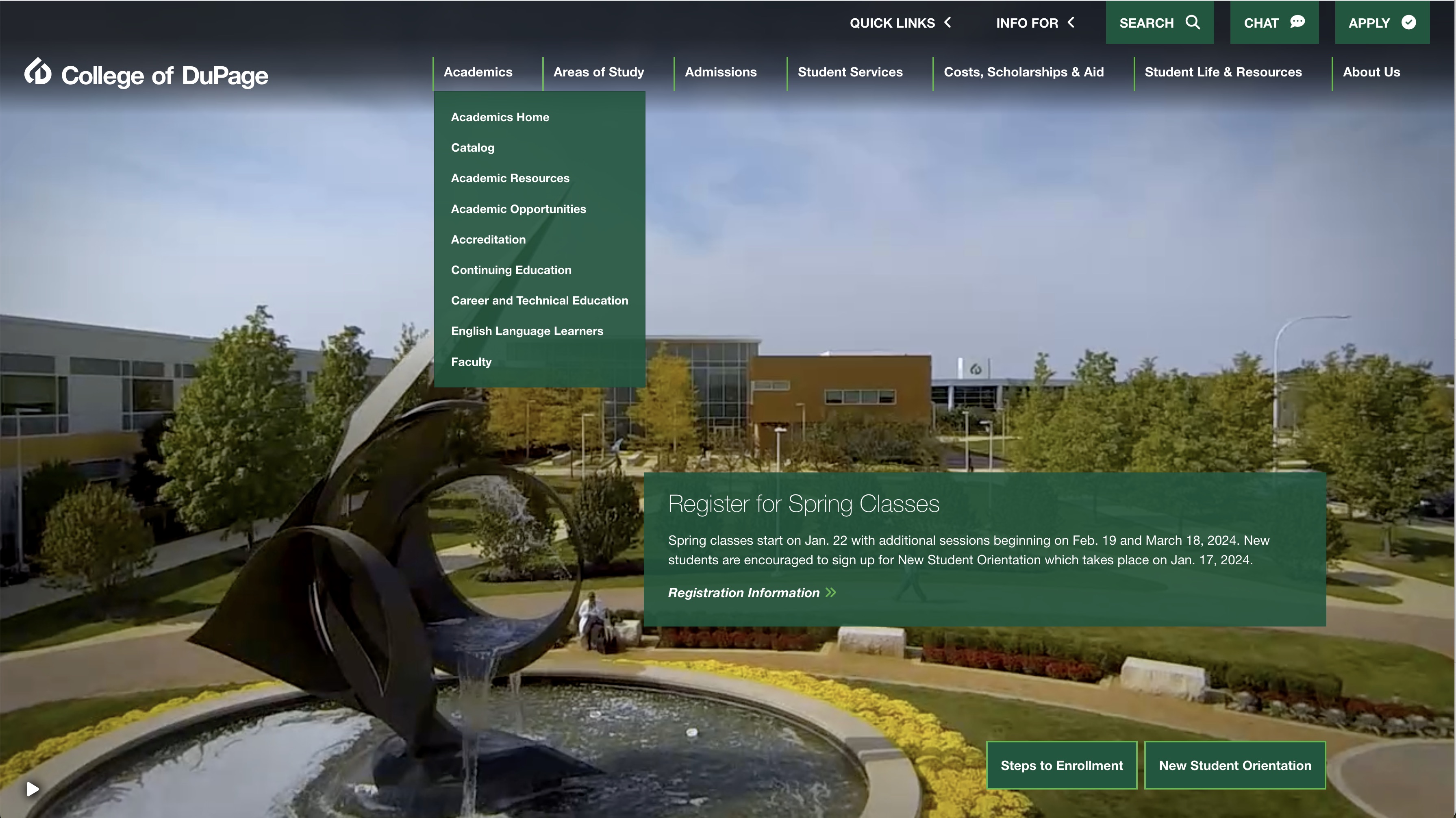
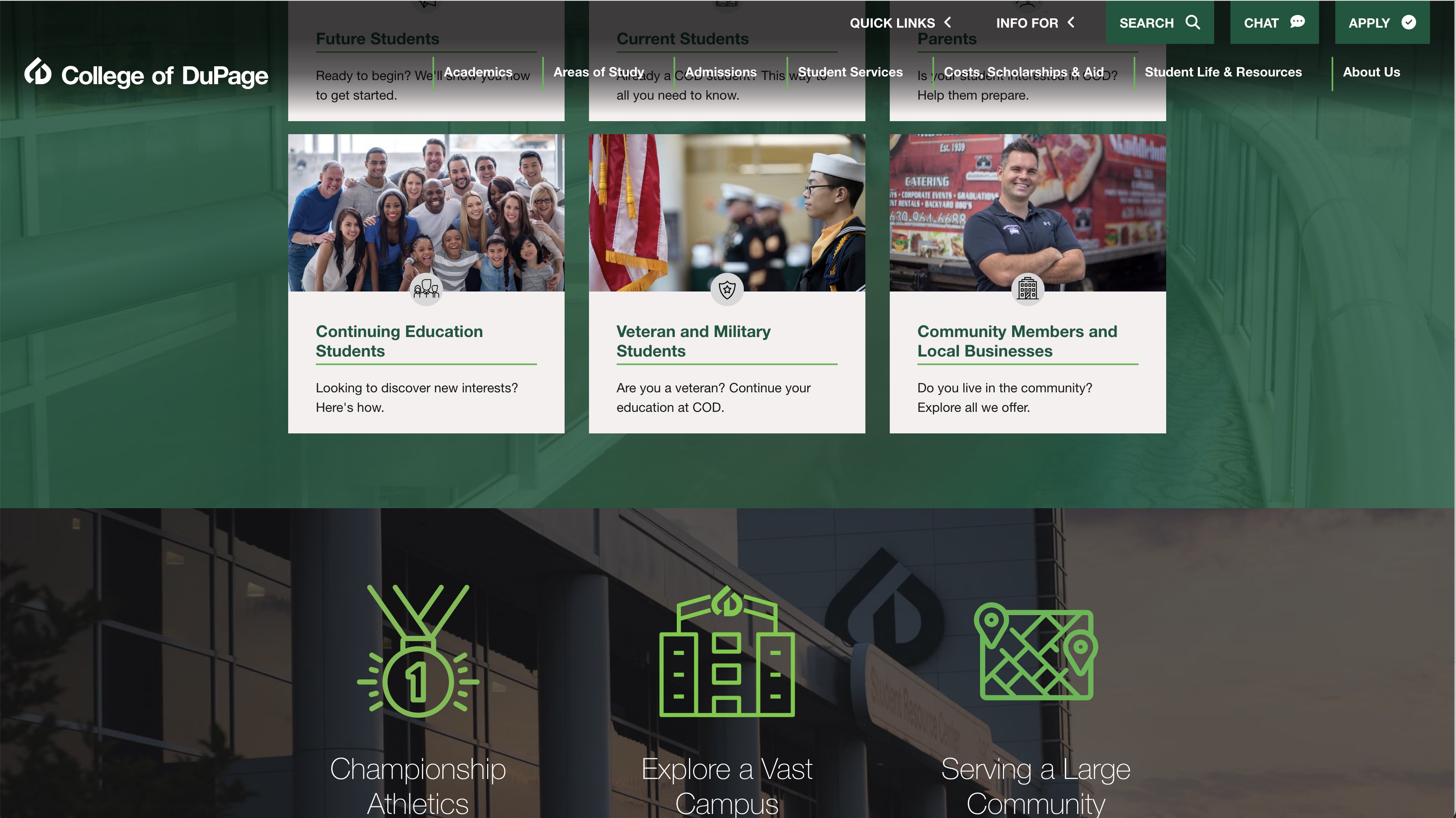
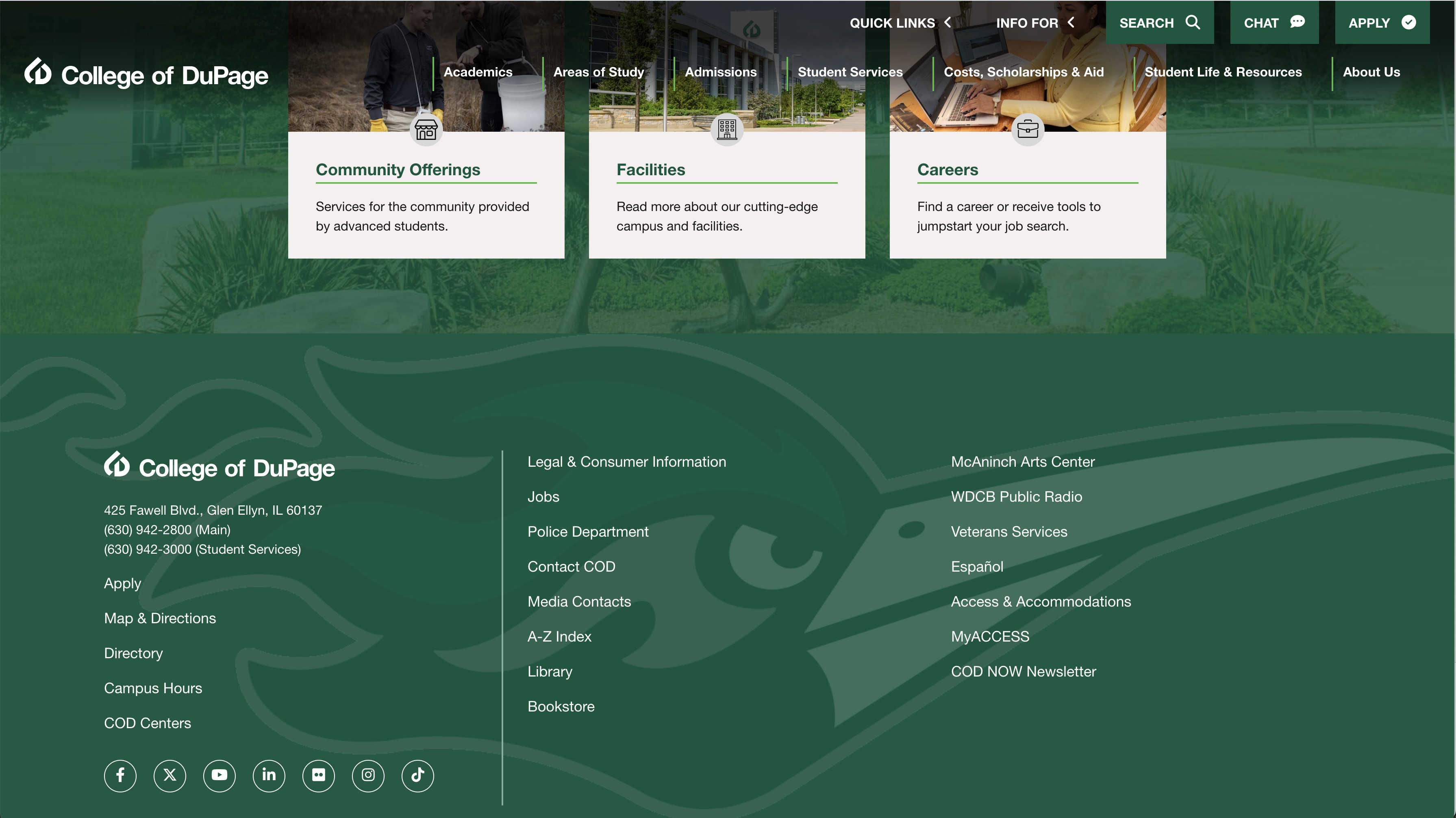
Duquesne University
Bold, boxy, beautiful and functional
What we loved: Functional design with integrated calendar
Duquesne University has an aesthetically pleasing website that uses a bold, boxy design with vibrant red, white and blue colors.
The design doesn't just look beautiful; it’s also highly functional, offering persona-based navigation with a dropdown at the top. For quick navigation, it offers site search with an easily findable search bar on the homepage.
With a bold statement right in the center of the homepage, the mega menu is expandable and has links to all the important web pages that visitors can navigate.
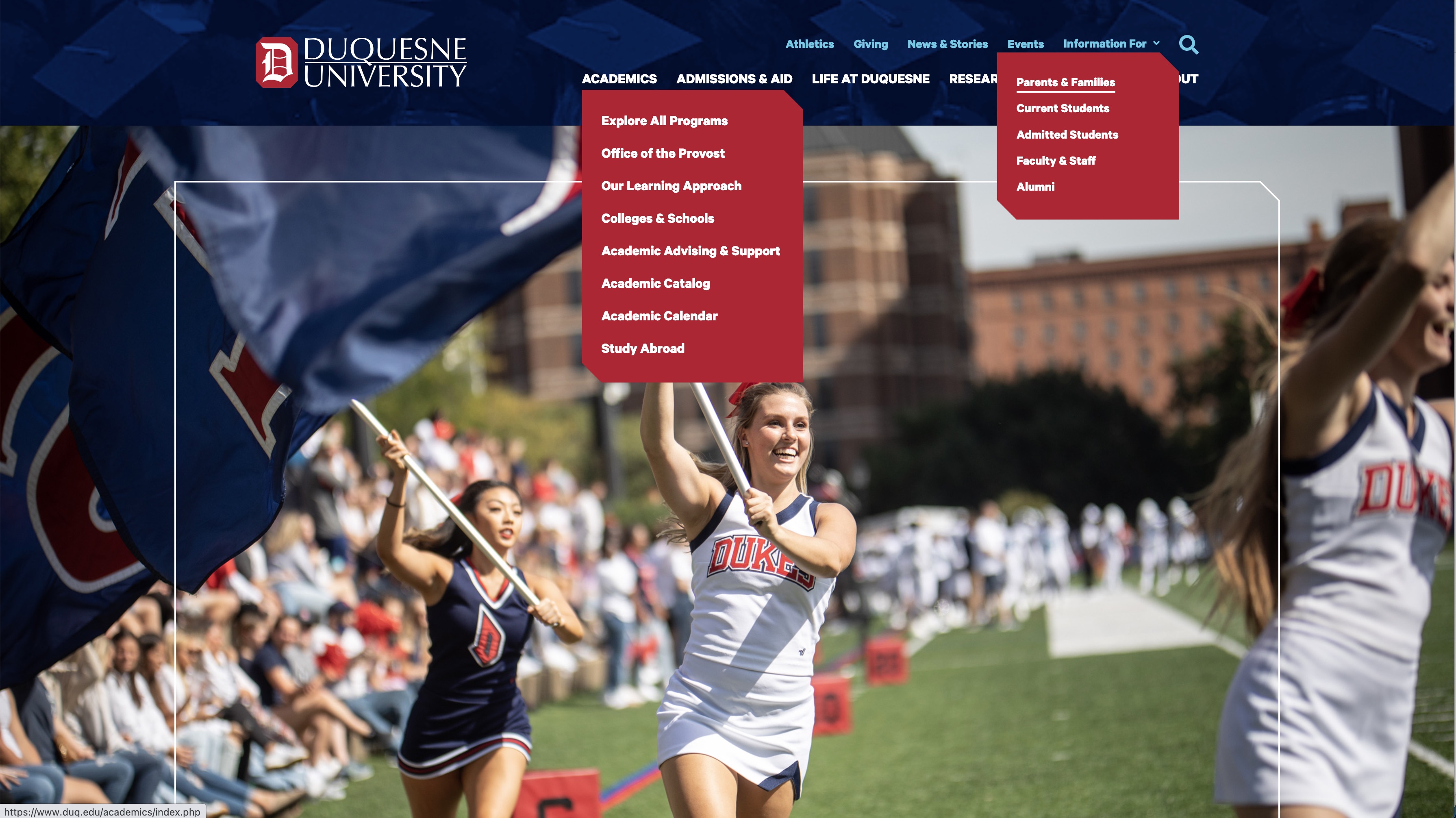
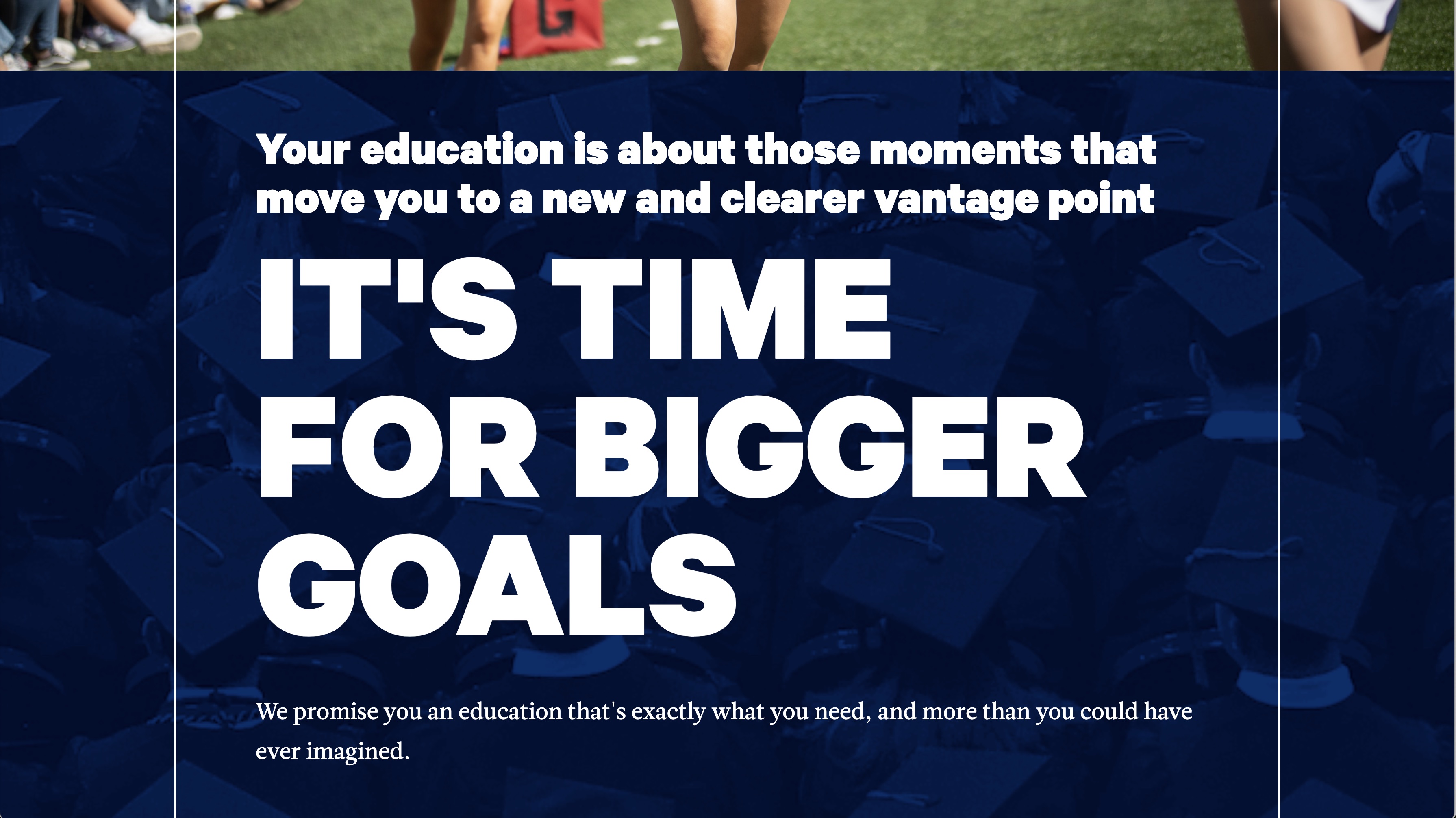
Like the College of DuPage, Duquesne’s website offers an integrated events calendar, which allows visitors to sort, find and register for the upcoming events right from the homepage.
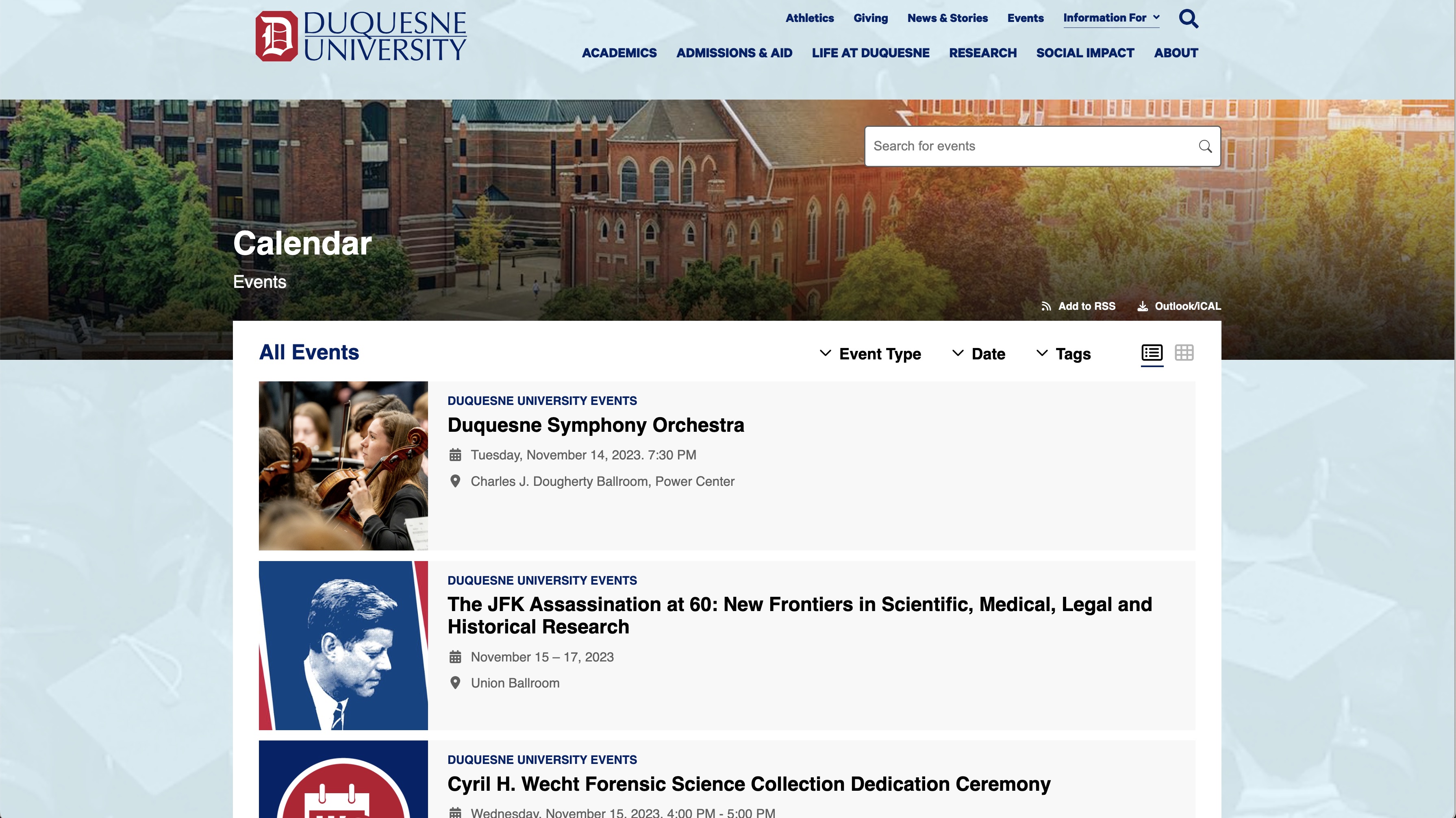
Ferris State University
A personalized website
What we love: Personalized experiences tailored to the visitor’s profile
Modern students are used to personalized digital experiences, and they expect the same level of engagement from higher education institutions.
The 2023 E-expectations Trends Report found that 12% of students are frustrated by the lack of personalized web content. Additionally, 56% of respondents said they expect websites to deliver personalized content.
Ferris State has elevated its marketing approach through impressive personalization, tailoring calls to action based on individual student application statuses. This ensures that website visitors promptly access pertinent information and are guided seamlessly toward the anticipated next steps.
Impressively, Ferris State’s website increased website clickthrough by 2800% using personalization.
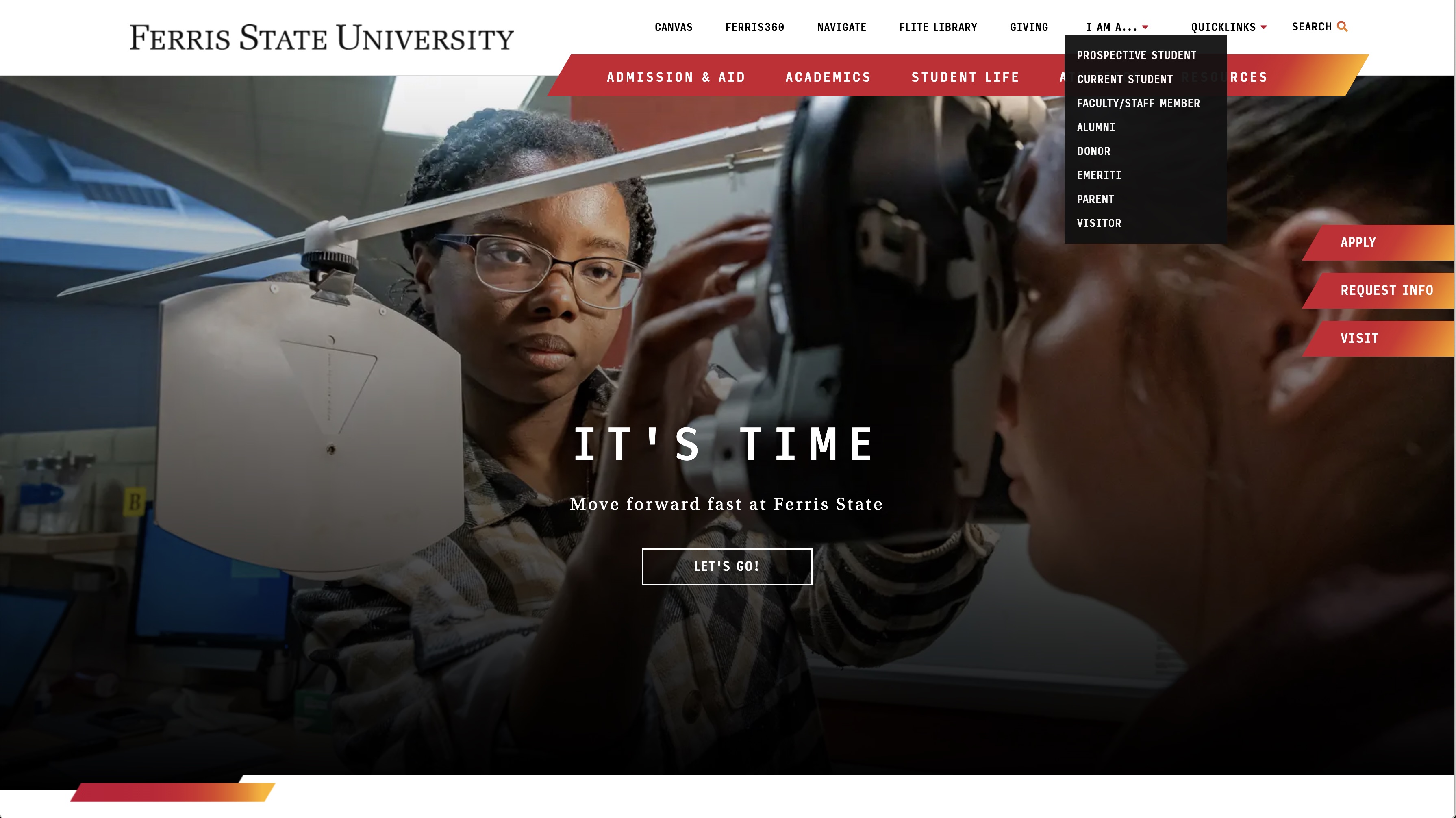
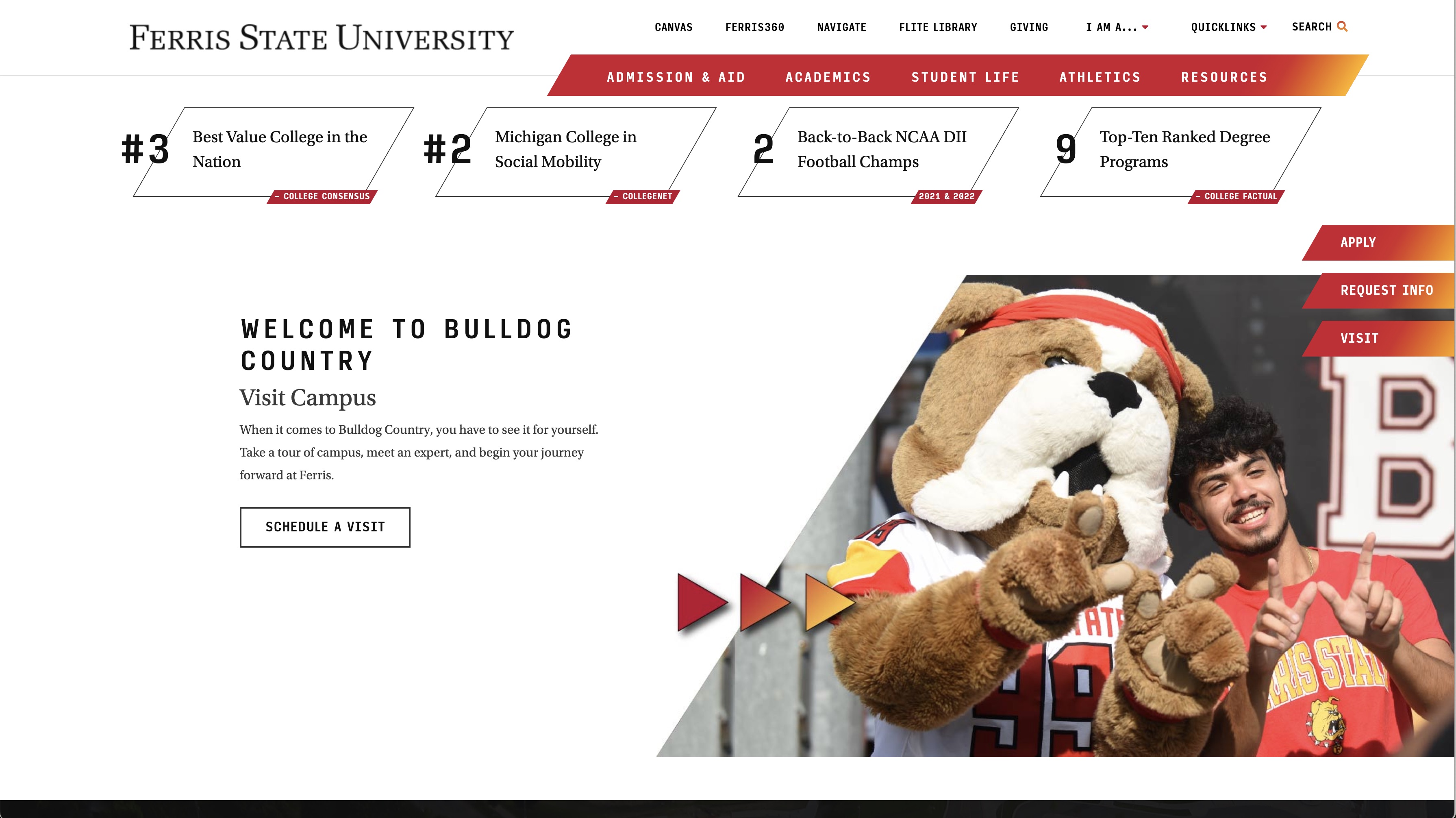
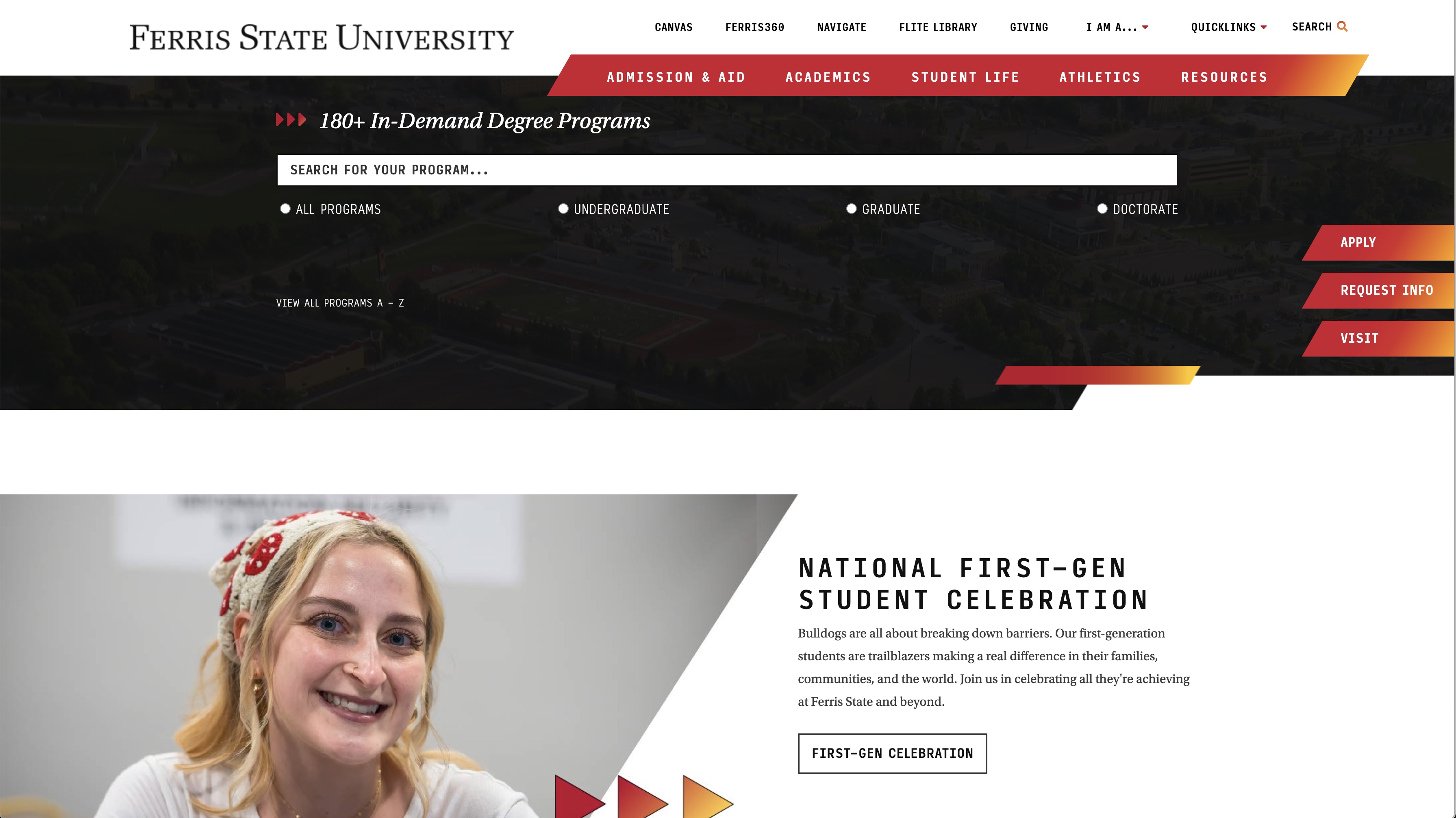
Florida A&M University
Branded, bold and beautiful
What we loved: Bold and confident design that reflects the brand
FAMU’s website showcases the institution as a brand boldly and clearly. The homepage makes it abundantly clear that FAMU has been recognized as the #1 Public HBCU five times in a row.
The creative use of bold colors, grand imagery and crisp text makes the website beautiful without being overwhelming.
The homepage only highlights brand values, lists important dates and events, and keeps all the information about academics, colleges, student life and athletics easily accessible via big, bold CTA buttons.
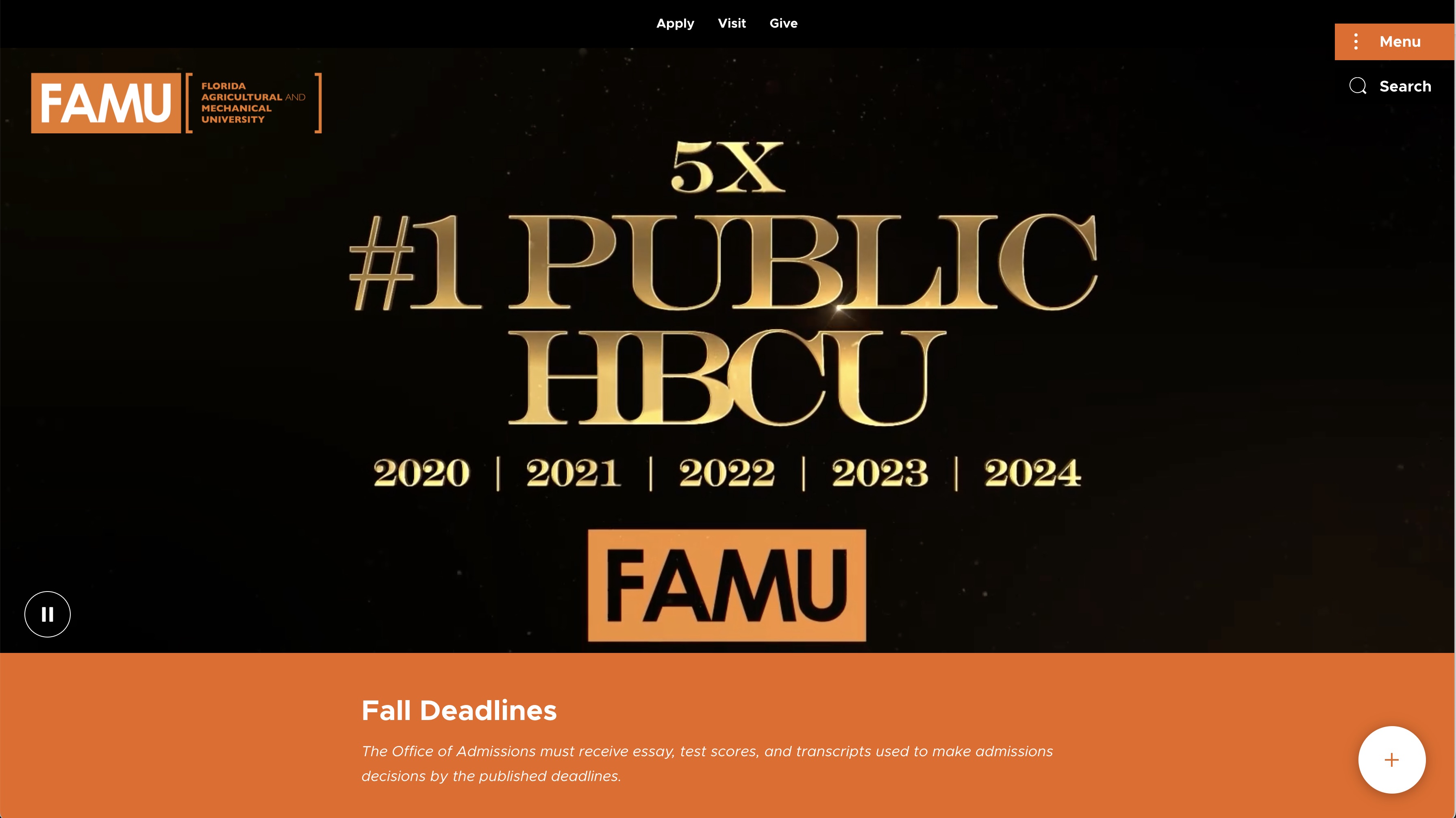
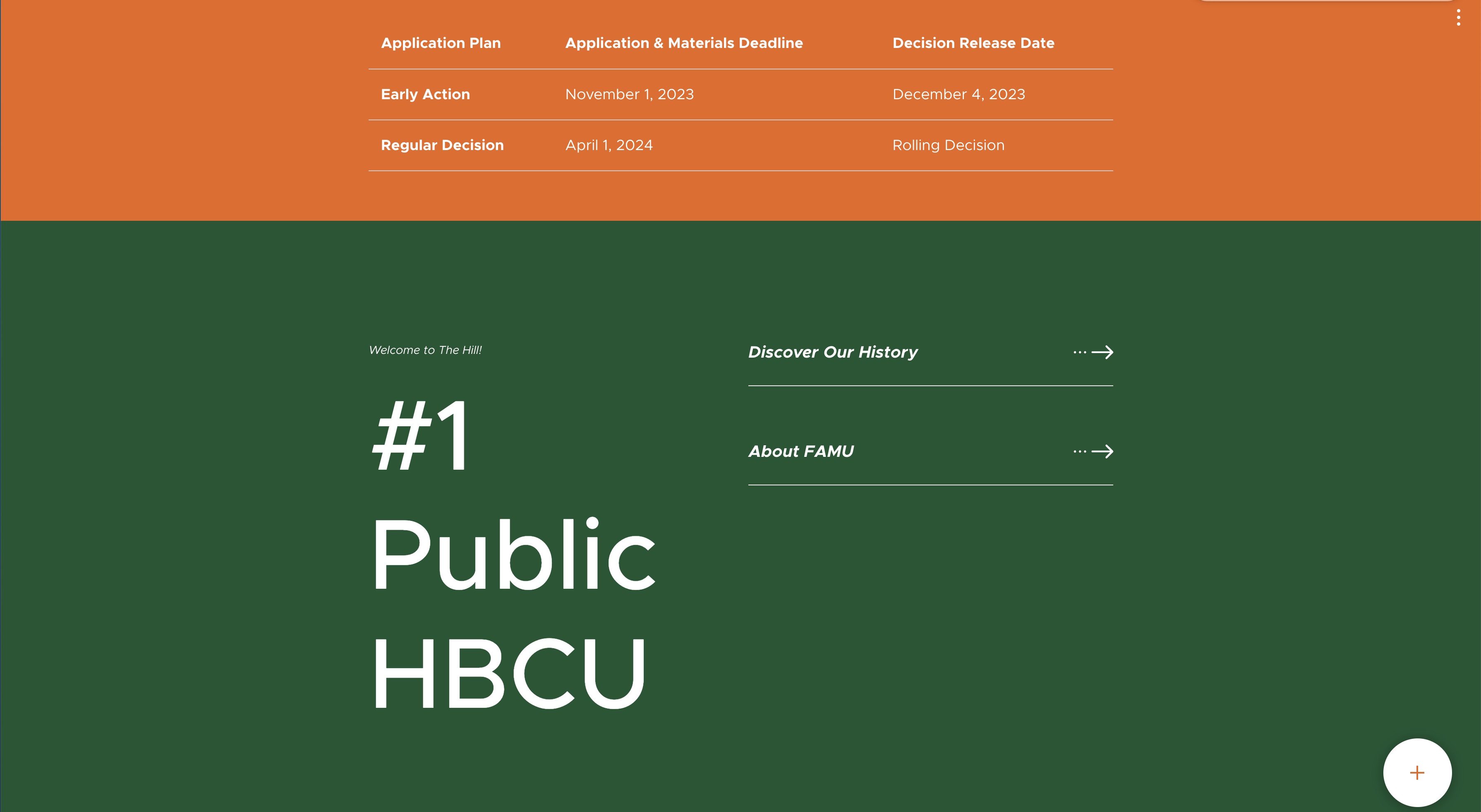
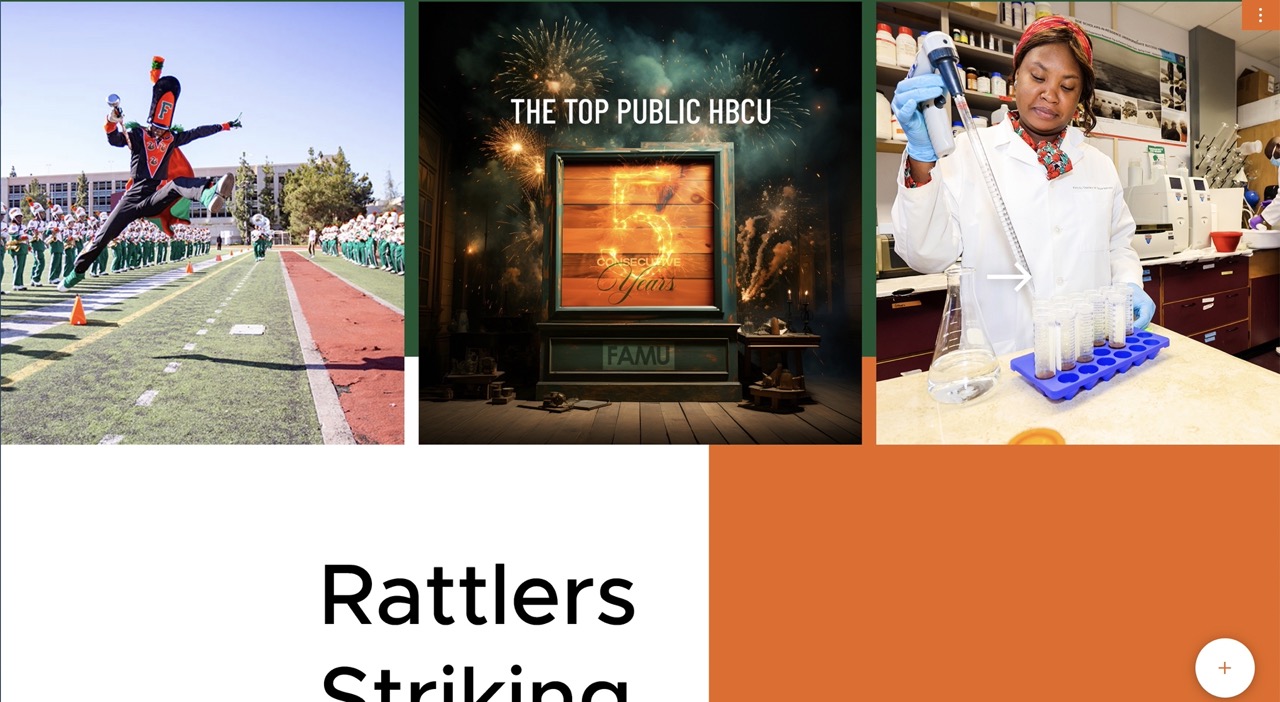
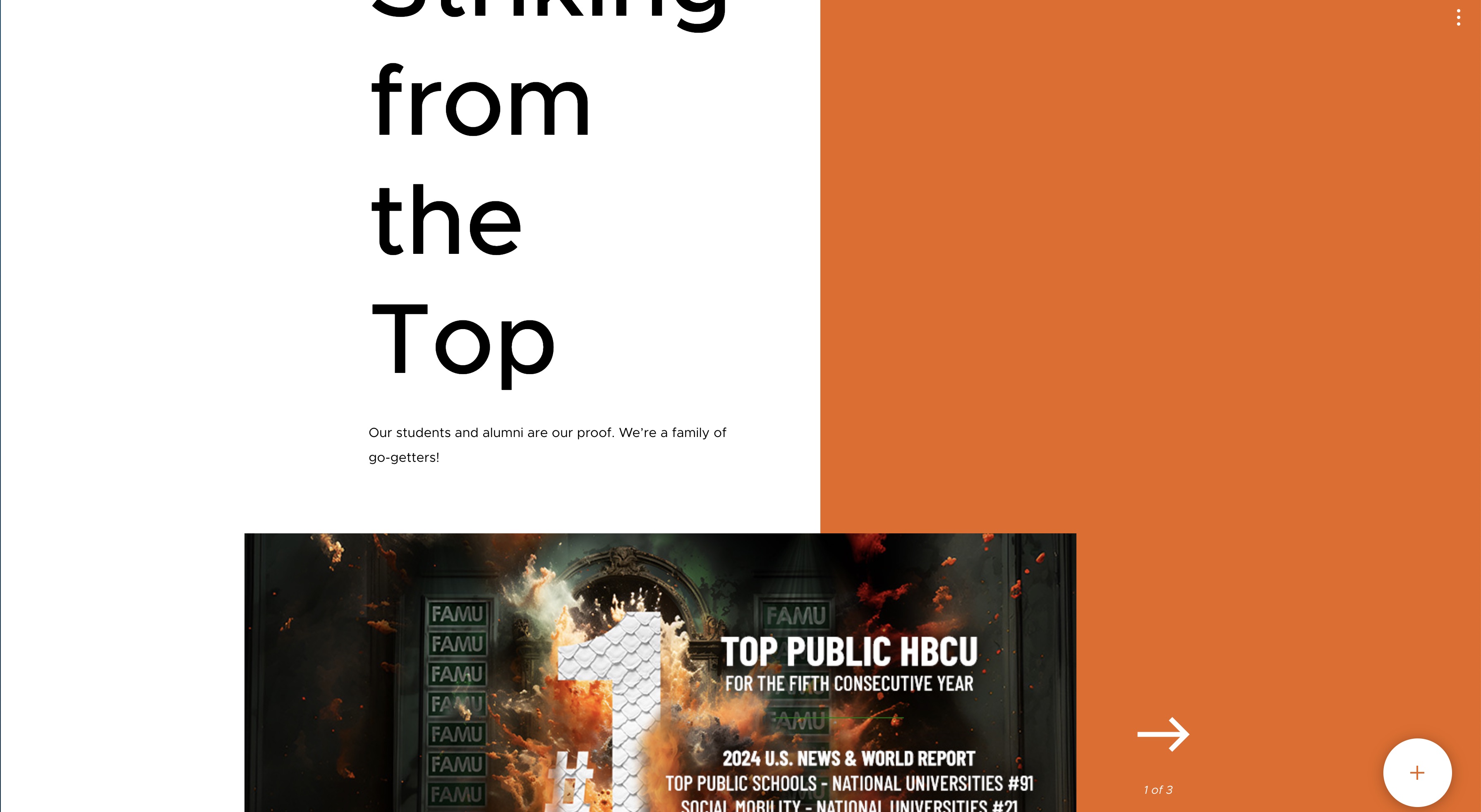
Kennesaw State University
Careers over courses
What we loved: Persona-based navigation and integrated career pathways
Kennesaw State is another institution that has an easily navigable branded website with academic information in the front and center of its homepage. With a persona-based navigation dropdown right on the top right corner, it delivers relevant information to specific groups of stakeholders.
Instead of highlighting the courses and programs it offers, Kennesaw State asks students what they want to do or become—and then suggests appropriate courses and career paths.
With a prominent search bar right in the center of the homepage, students can navigate to desired courses by looking for their degree. They can also choose from their areas of interest and navigate to courses that will help them pursue a career that interests them.

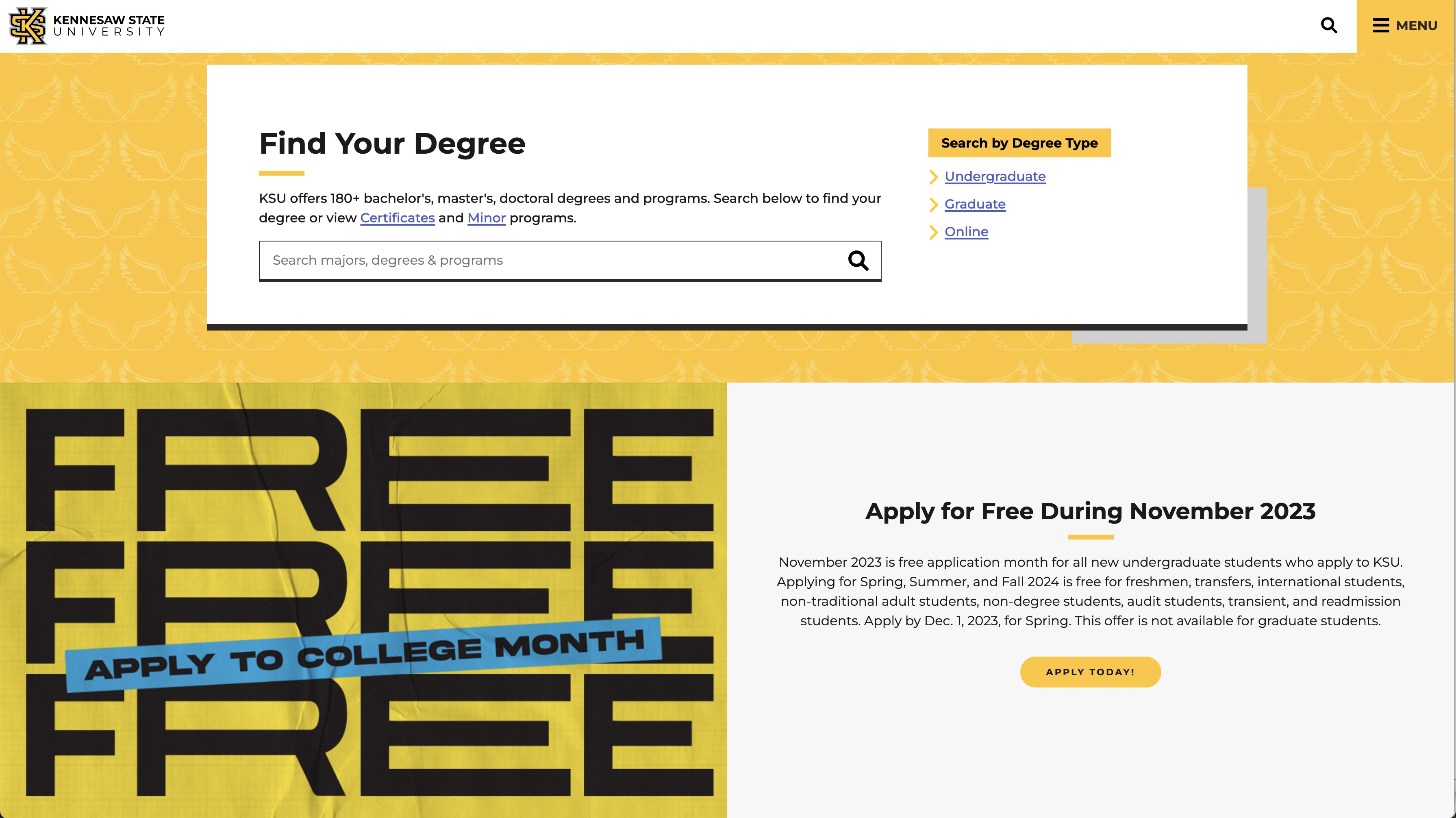
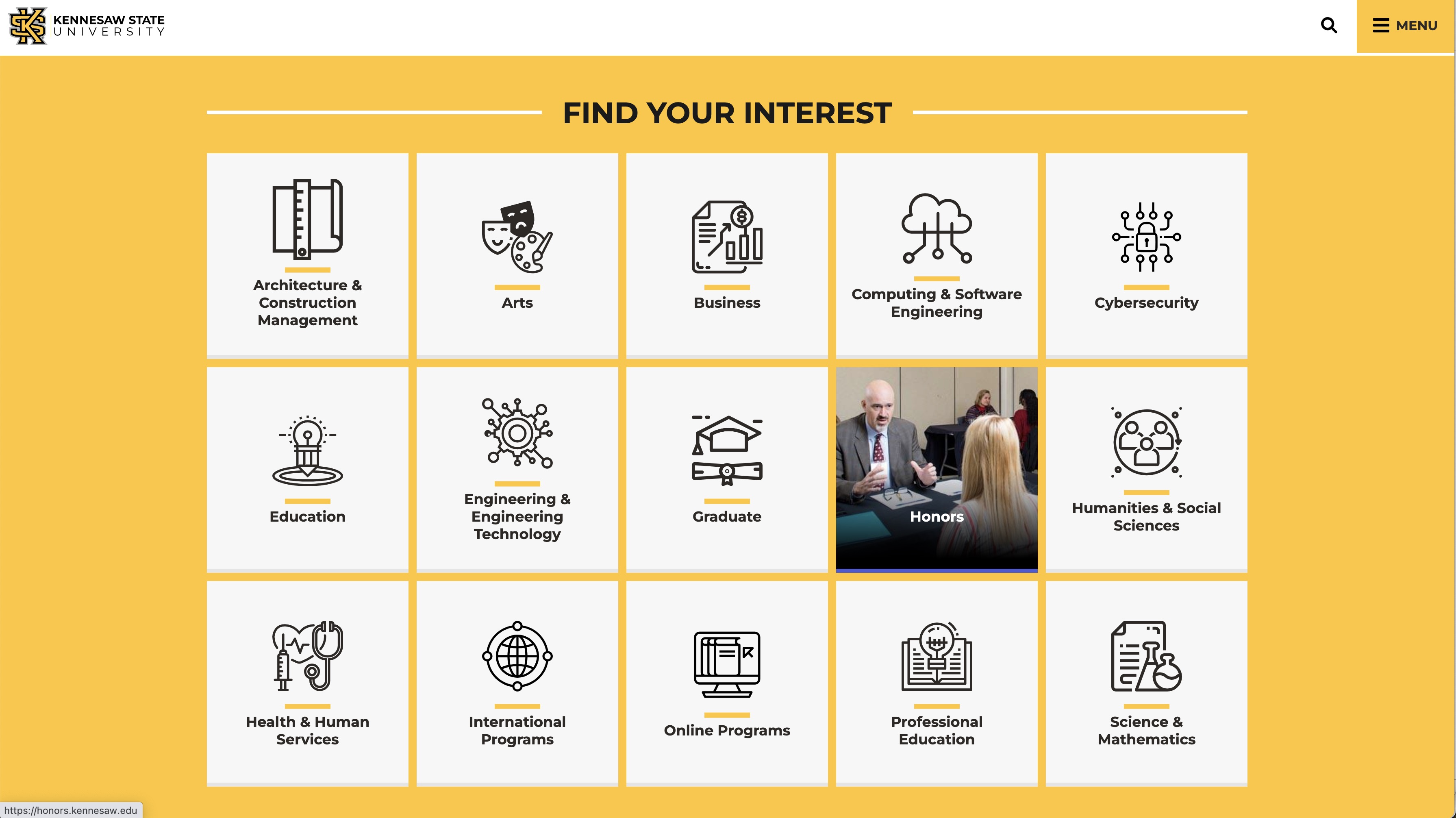
After laying down clear career paths, Kennesaw State takes things a notch higher by integrating the course catalog and career pathways into its website. This helps students immediately evaluate the return on their educational investment before enrollment.
Prospective learners can clearly see how much time, effort and money completing a program will take and after completing it, what they can do and earn in the real world. Integrated career pathways help them evaluate all this with current and accurate career data on the program pages.

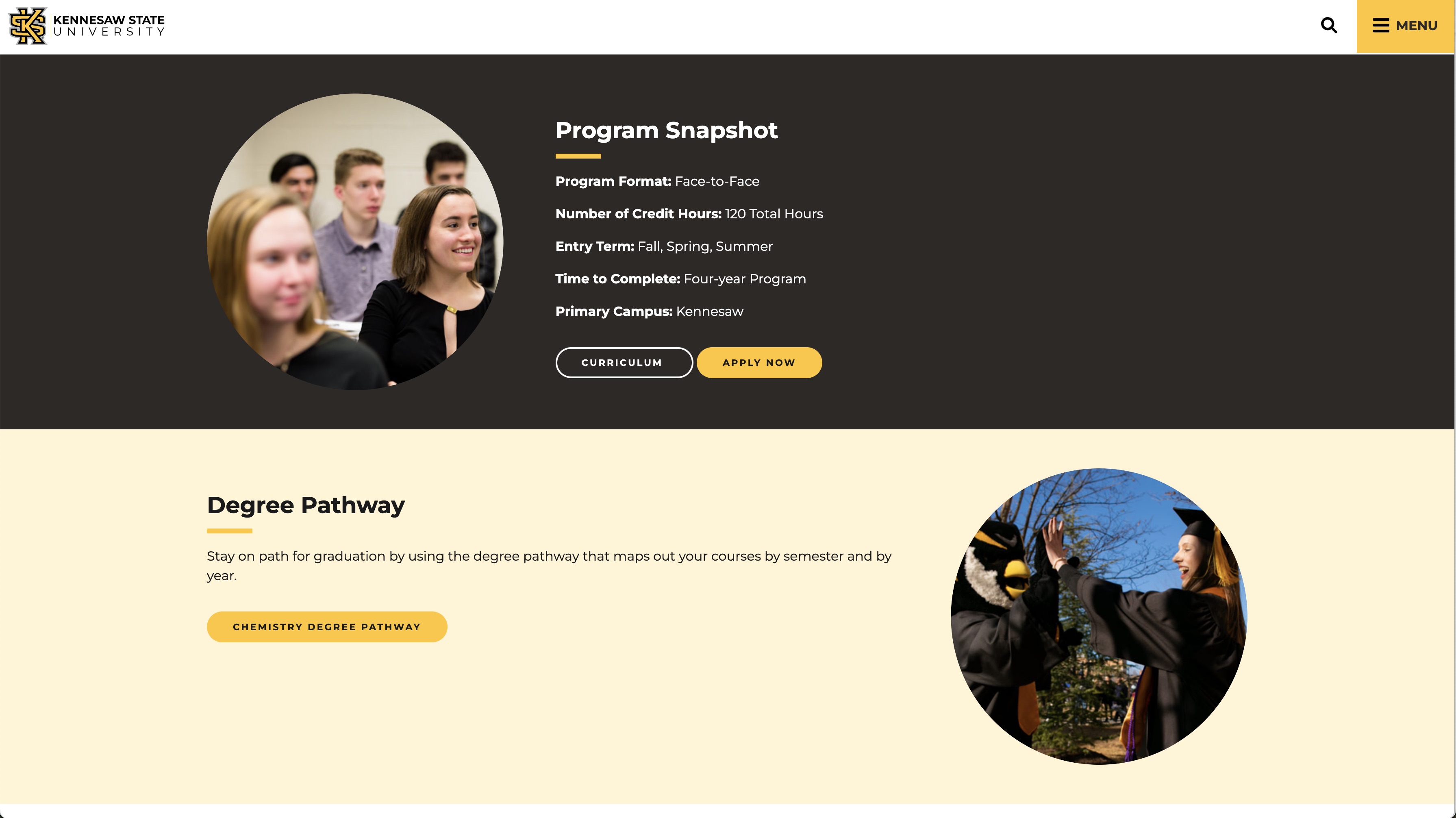
Kentucky Community and Technical College System (KCTCS)
A system website with multiple branded college subdomains
What we loved: Brand consistency across multiple subdomains
KCTCS is a system of colleges, and its website makes great use of multiple domains to organize and manage multiple college websites. It uses a main system website that encourages visitors to explore KCTCS colleges and delivers a consistent branding experience across all its college domains, facilitating seamless transition between the college websites.
The main website has an explore all colleges segment right at the center of the homepage, with colleges listed in big tiles. Visitors
can click each tile to visit that college’s website. 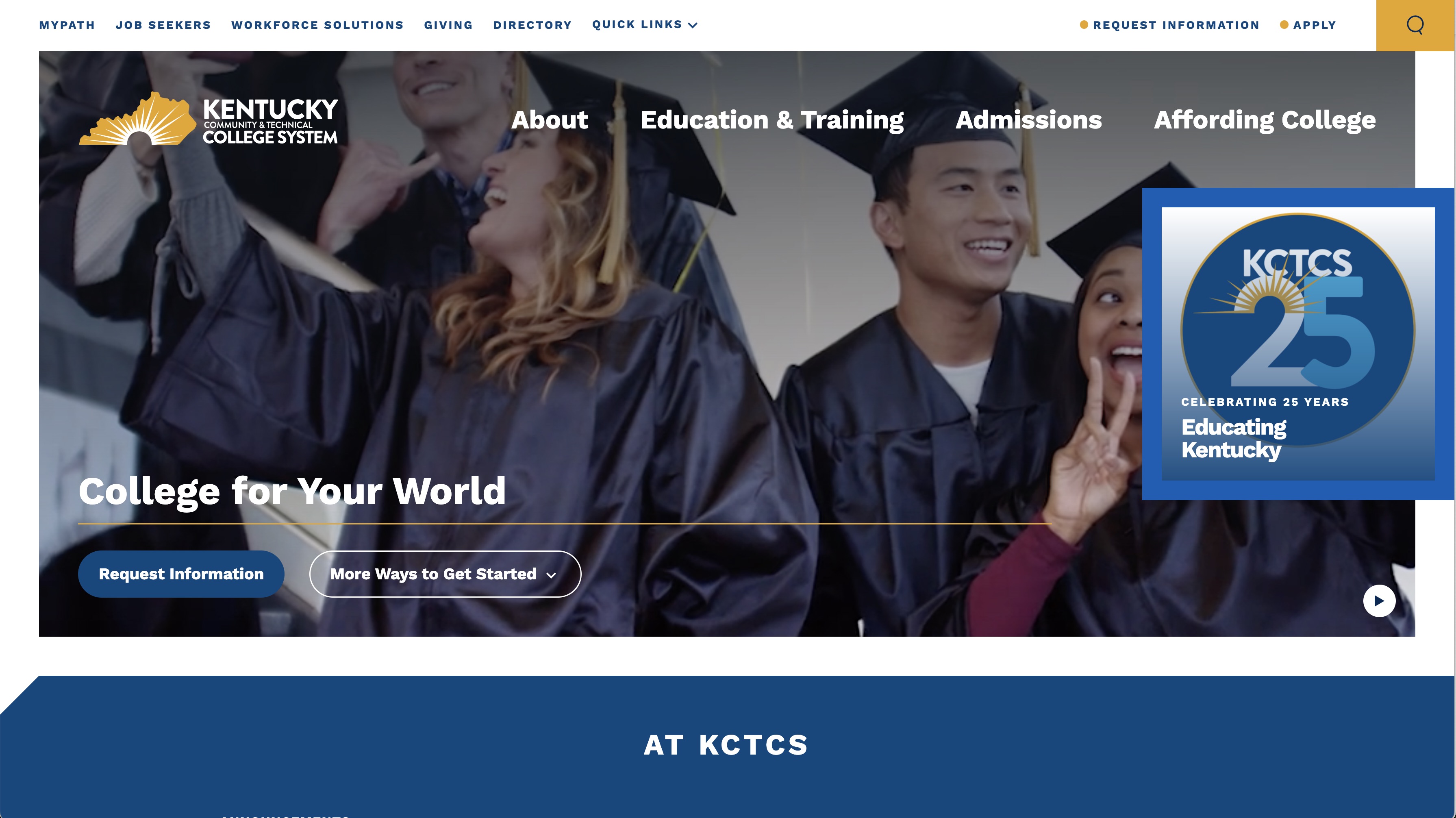
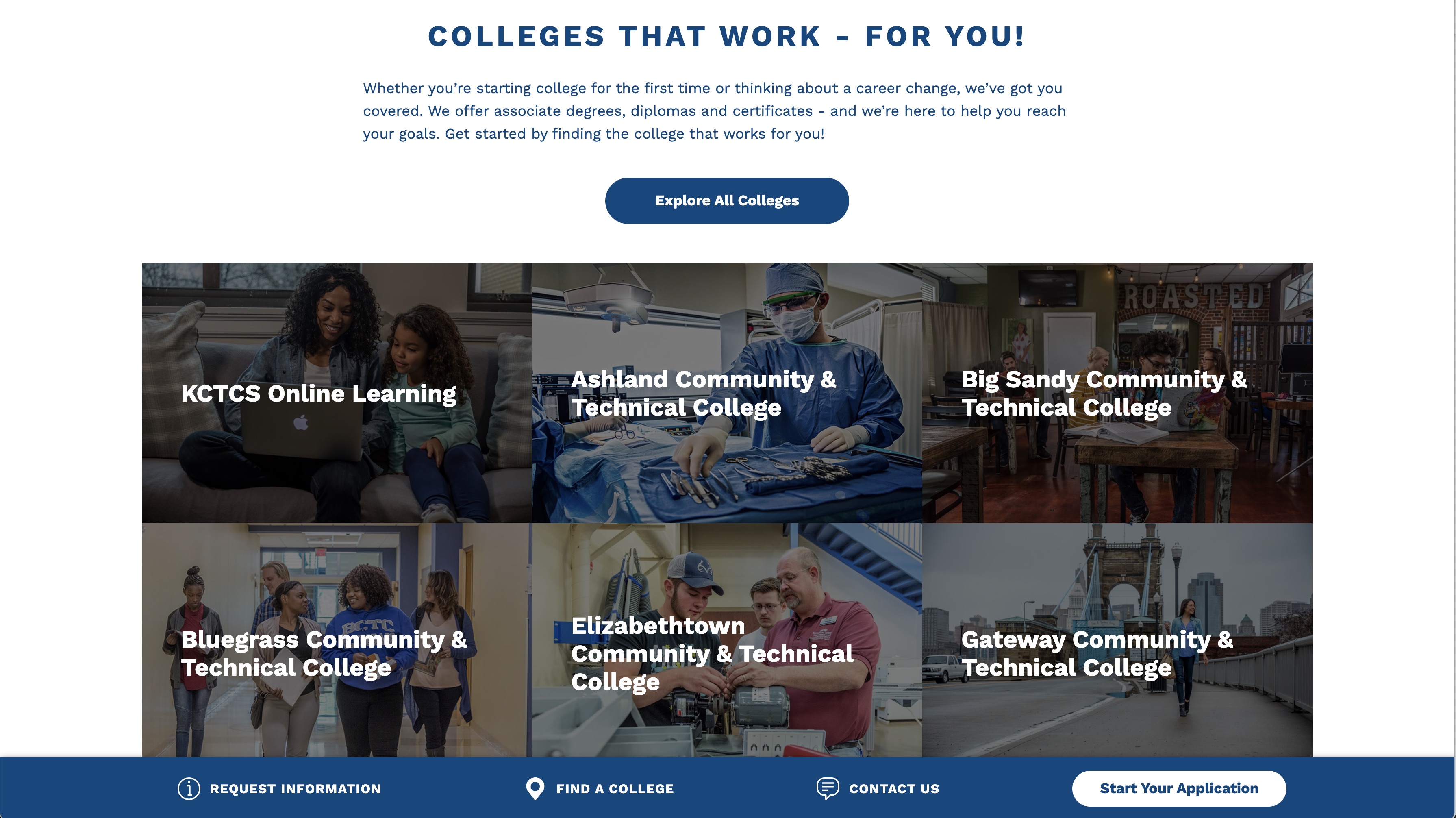
Maintaining the same branding and layout, the college website then encourages visitors to explore all its programs in the same way the main website prompts them to explore all colleges.
The experience and layout of the websites are virtually identical, making the transition
from one domain to another seamless. 
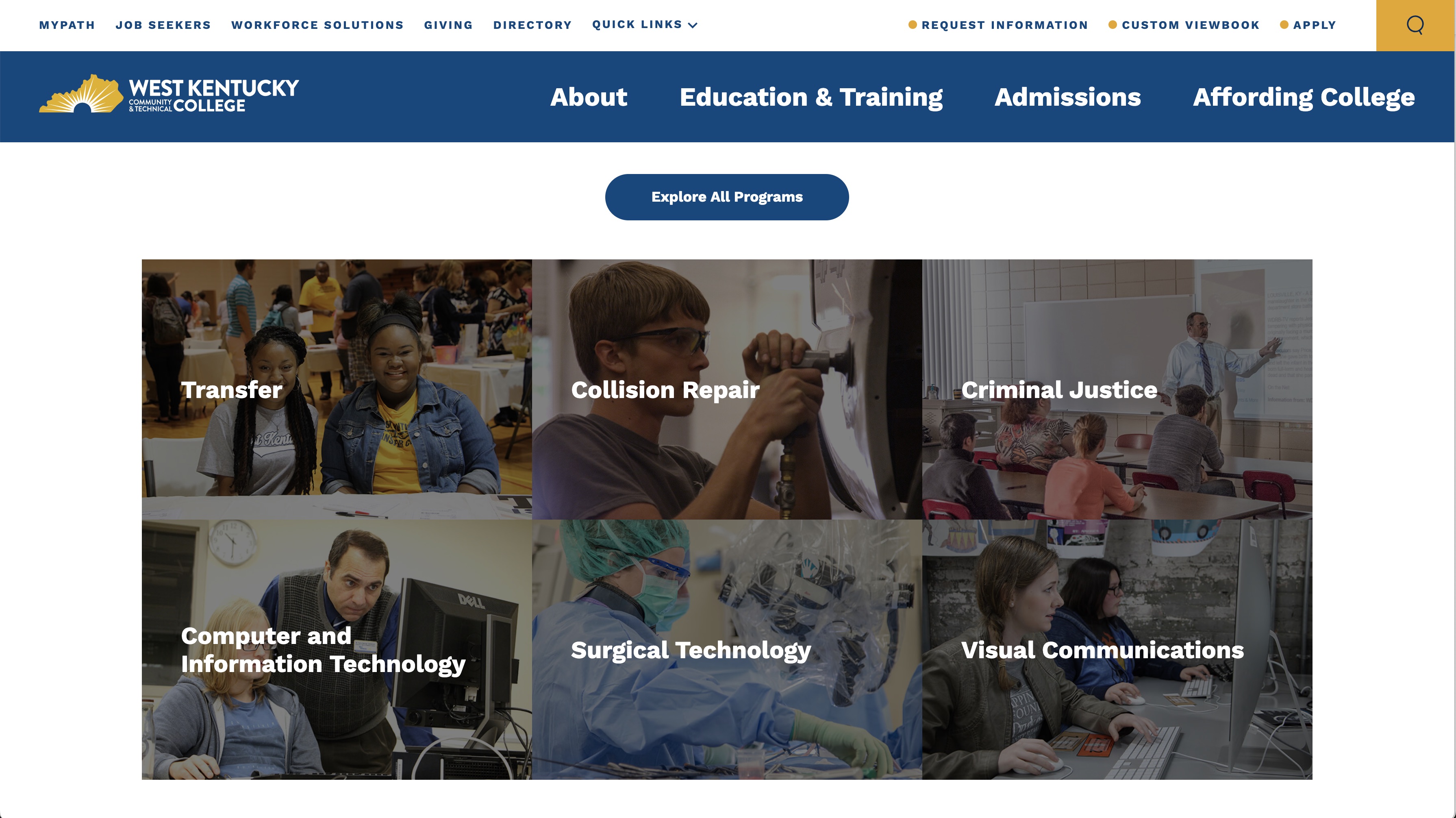
Pepperdine University
A branded house of higher education websites
What we love: Seamless branding and experience across multiple domains
It is not uncommon for universities and colleges to use multiple domains to serve their numerous department and branch needs. However, not all institutions ace this strategy like Pepperdine.
Like KCTCS, Pepperdine leverages multiple subdomains for each of its school/college’s websites and one community. The school/college domains are focused on recruitment, while the community caters to their internal audience of faculty, staff and current students. All these websites are linked to their main website and are so consistent in their branding that a visitor can move from one domain to another without realizing it.
The purpose of the university’s main website is to encourage visitors to go to its school’s websites, and it does so effectively with multiple CTAs – on the mega menu and large tiles in the center of the homepage.

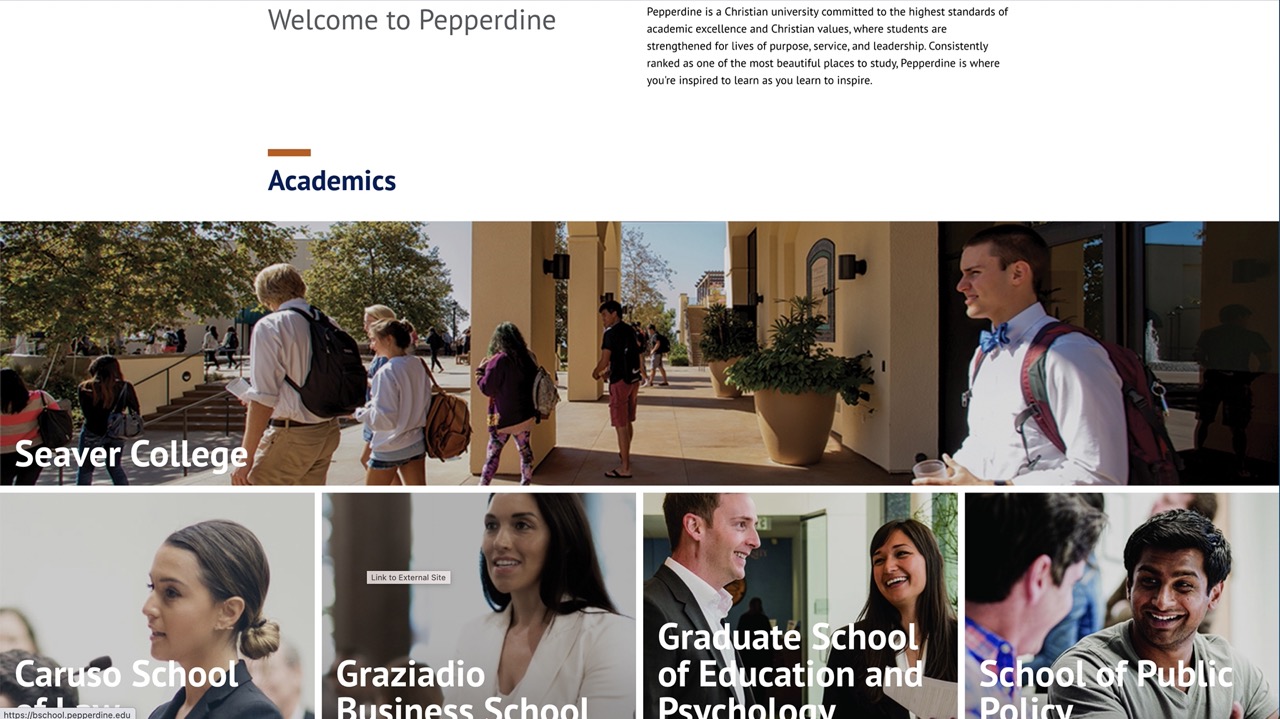
The visitor’s transition to the school’s subdomain is seamless because of the consistent branding. Once on the school’s website, the visitor can find all the important information via CTA links and buttons in the mega menu and tiles in the center.
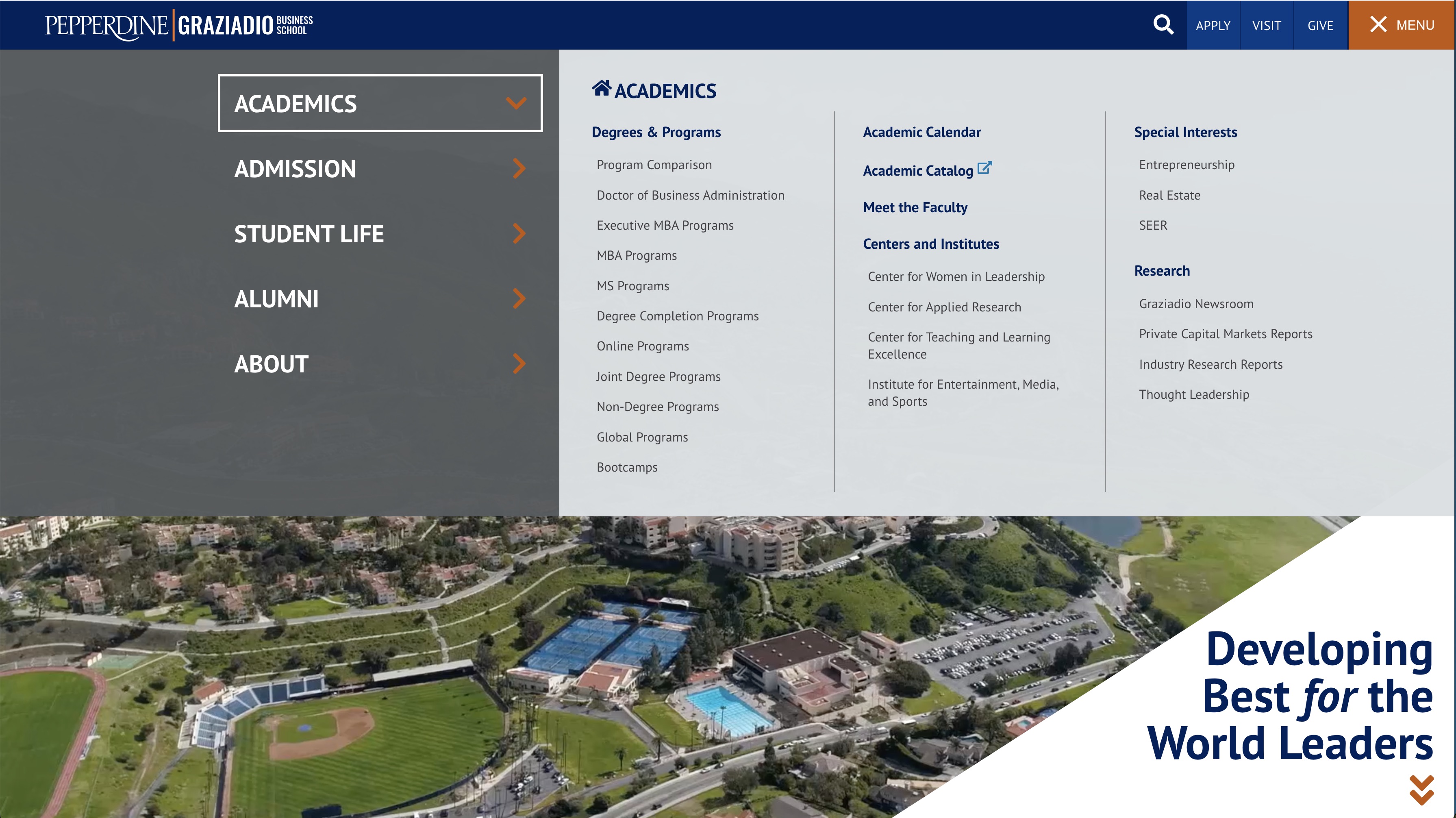
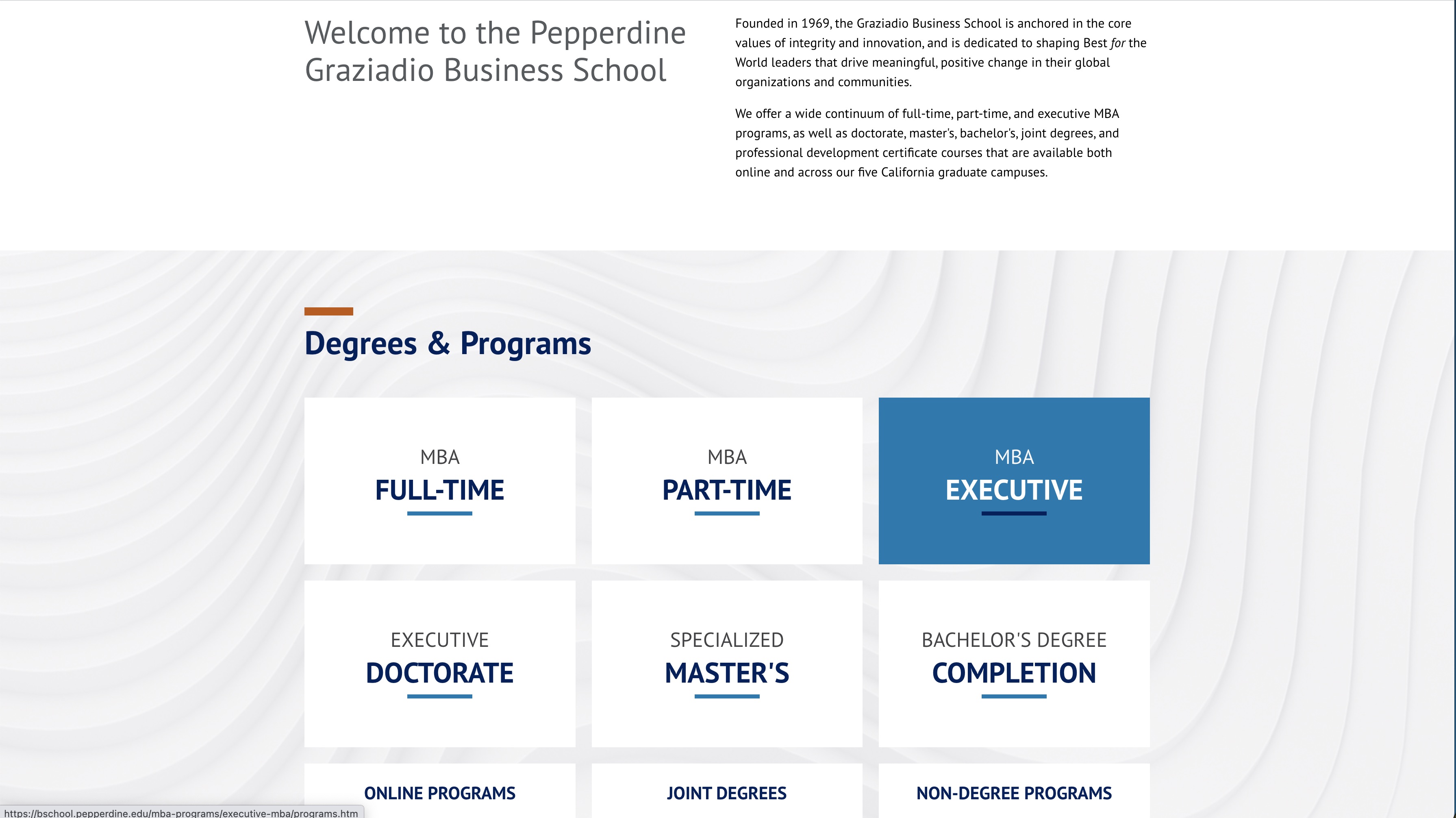
Pepperdine leverages great design to manage vast information and simplify browsing for its many audiences. This helps the university highlight each school’s unique benefits without confusing or overwhelming site visitors.
The community website, which is accessible from the main website, is also consistent in its branding. The layout is slightly different because of the different purpose and audience of the site.
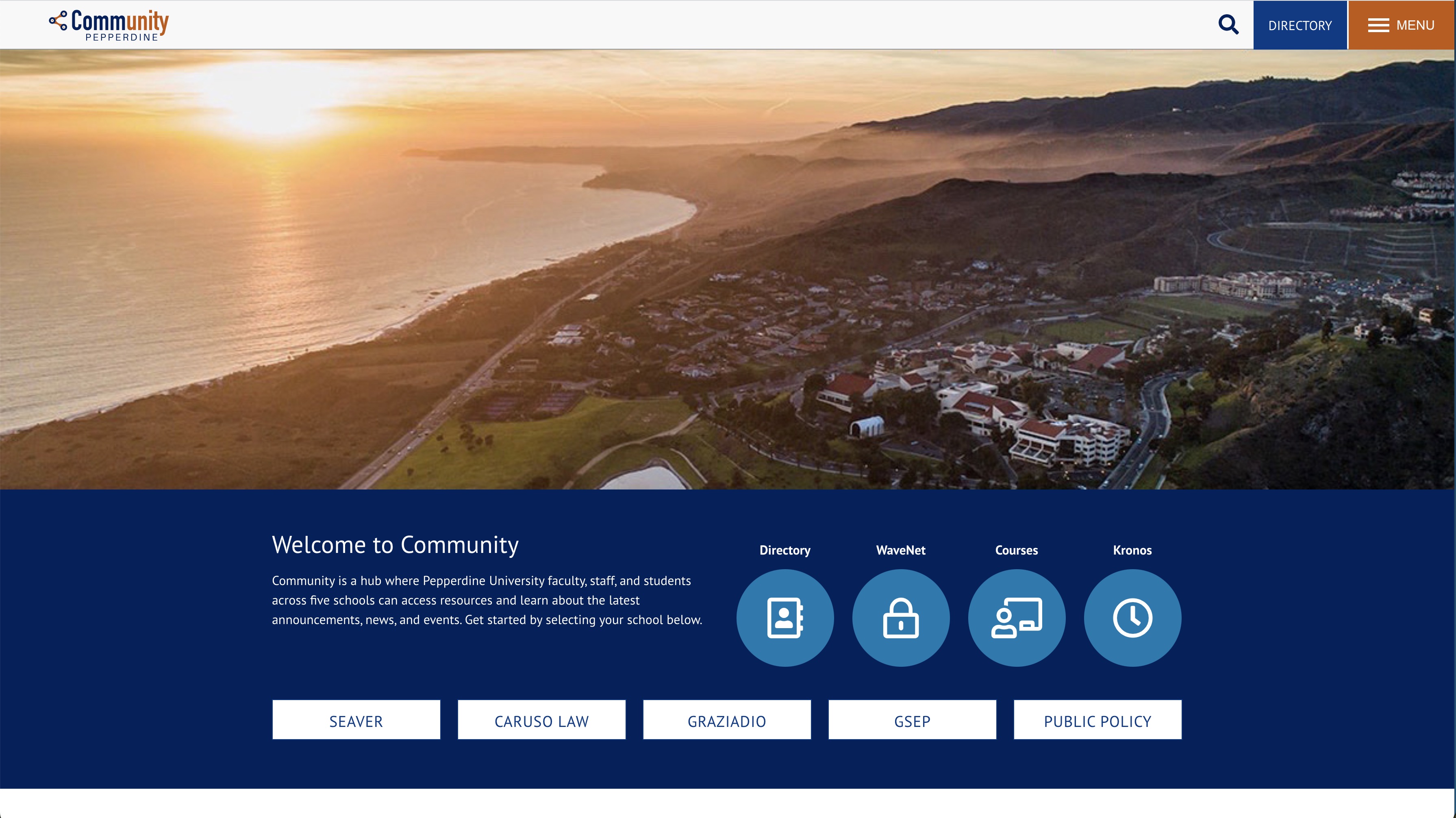
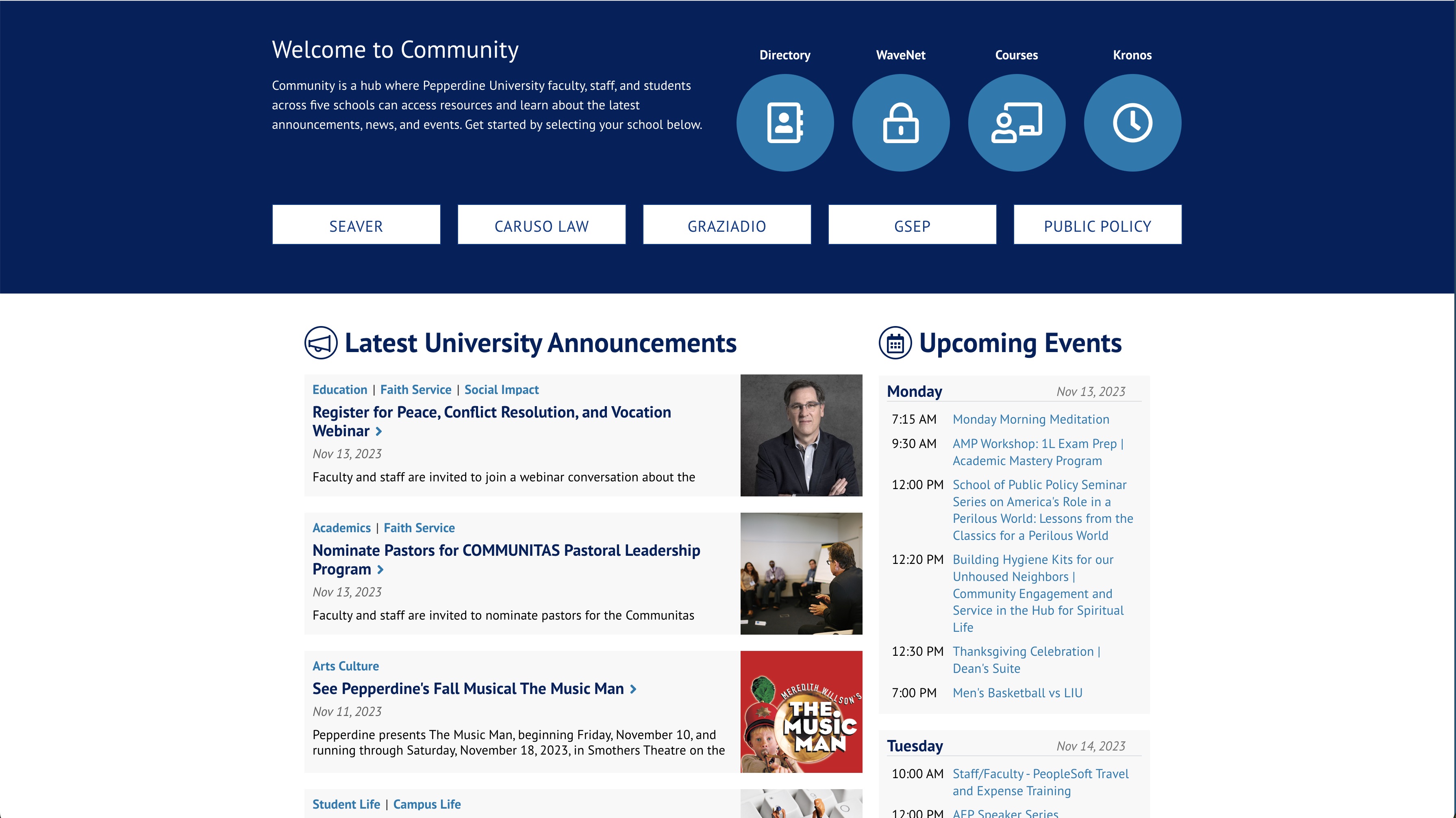
Pepperdine is able to manage multiple domains and deliver consistent experiences across the board because it uses a powerful CMS that’s purpose-built for higher education. It understands the unique requirements of higher education and expectations of modern students, using a design that meets all of that.
Rock Valley College
Simplicity at its best
What we loved: An easily navigable, simple, clean homepage
High school students become immensely frustrated when it’s hard for them to find relevant information on higher education websites.
Rock Valley College recently redesigned its website and has successfully prioritized important academic information by making it easy to access.
The website features prominent CTA buttons right at the center of a simple and clean homepage. This helps anyone new to the website navigate it easily without getting distracted or lost.

The mega menu expands by hovering over it and shows all the important links with clear CTA buttons.
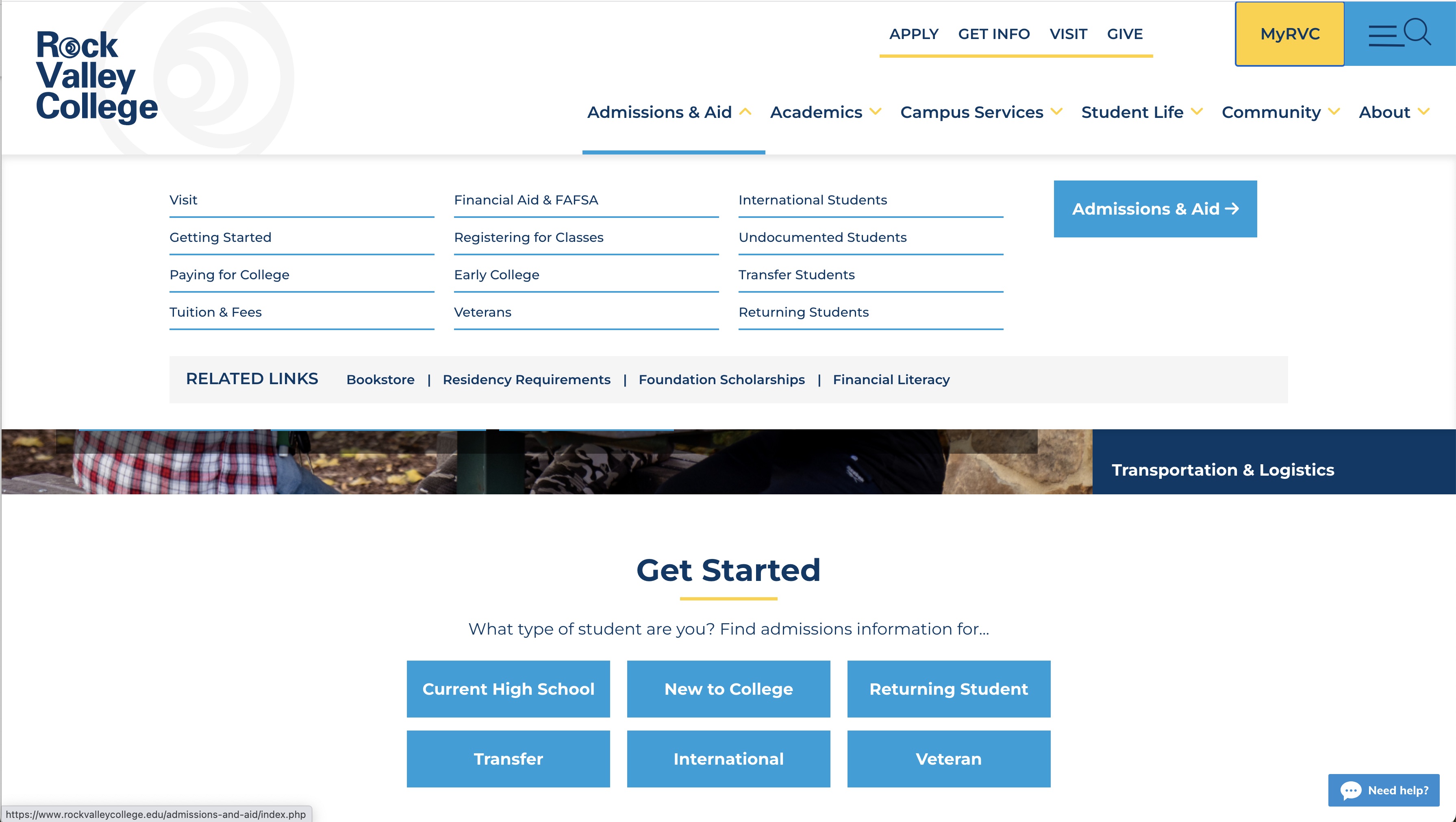
It caters to existing students, faculty and staff by making the MyRVC page accessible in a single click.
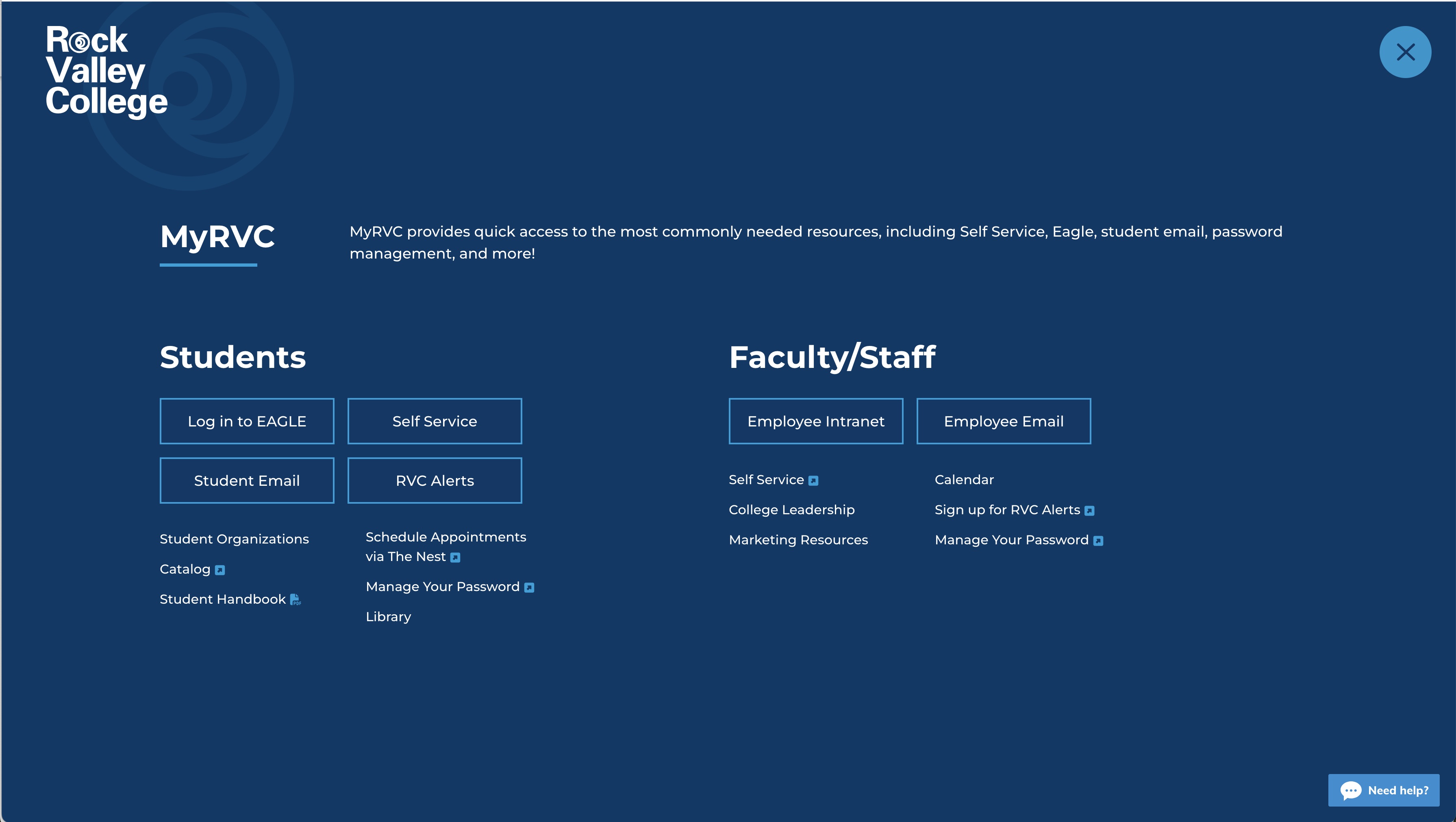
University of Montana
An extremely engaging application site
What we loved: Personalization and design consistency across their website and subdomain
As more students expect and want to see personalized content on higher ed websites, more institutions are adopting innovative ways to deliver personalized experiences.
Like Ferris State, University of Montana is doing a great job of delivering personalized digital experiences. Since its main website caters to multiple stakeholders, it has specially designed a website domain to attract prospective students and move them through the application funnel. It guides students through the next steps of their application process by displaying personalized content and CTAs.
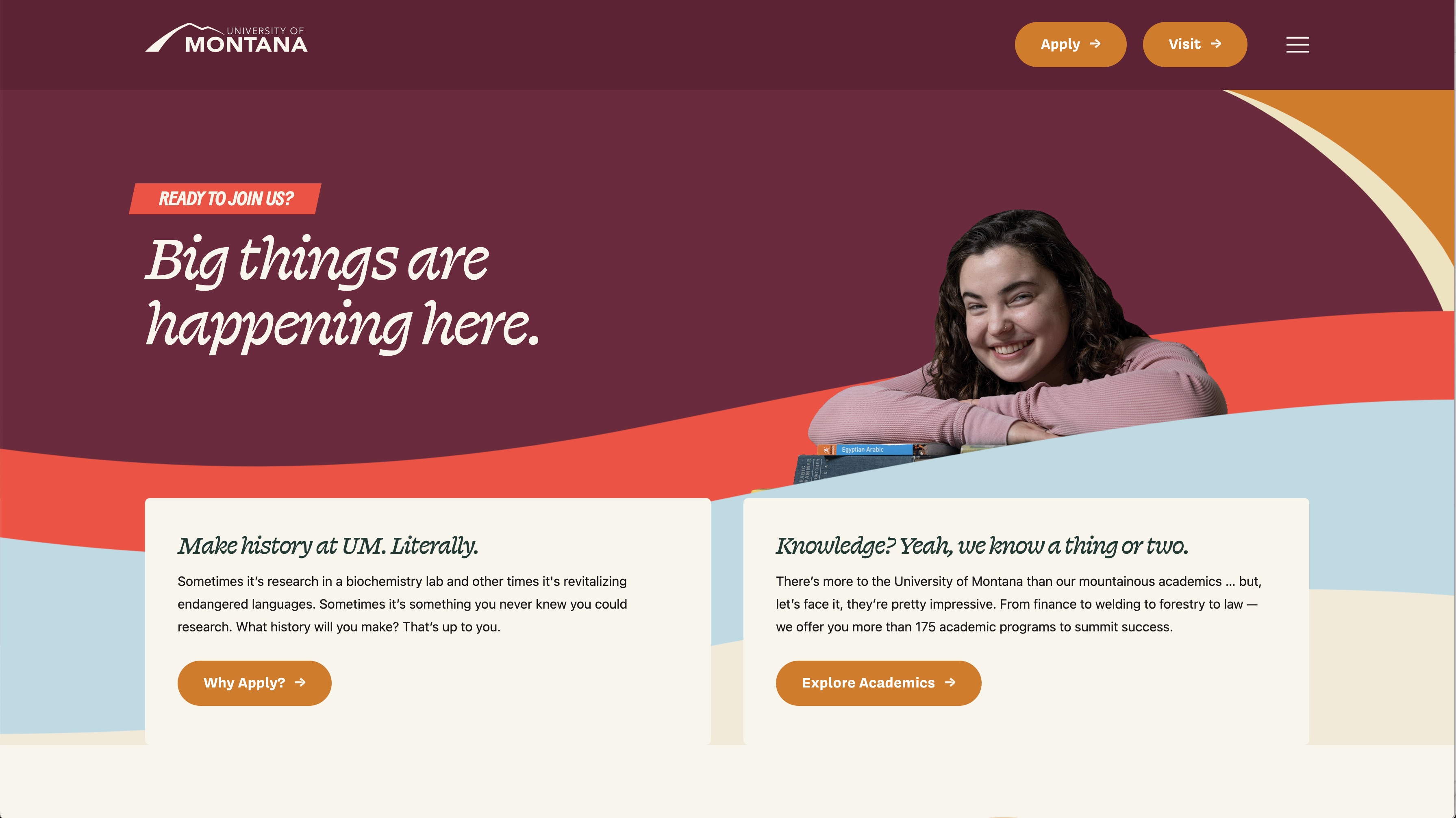

The University of Montana goes a step further in designing personalized experiences with its web pages and microsites tailored to engage specific target segments. They created a microsite — meet.umontana.edu — that caters to prospective students and introduces them to the university.
The mobile-friendly design highlights several interactive, multimedia elements – including feature videos, podcast links, polls, quizzes, sound and visual toolkits – that students can interact with. What’s more, the university can track their engagement and segment them to further personalize their journeys. It has clear CTAs that stand out throughout the page to lead the visitors to the desired next steps.
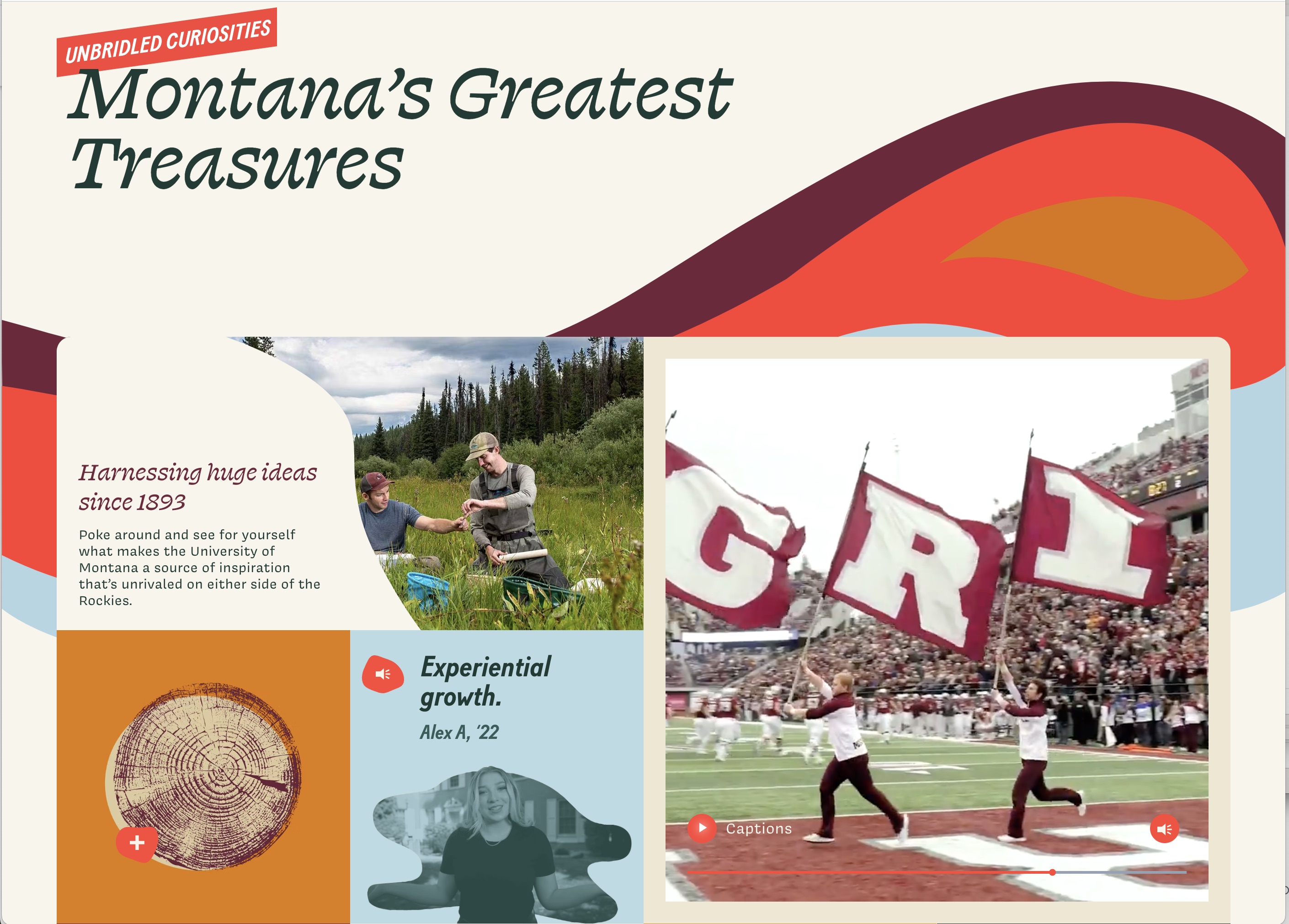
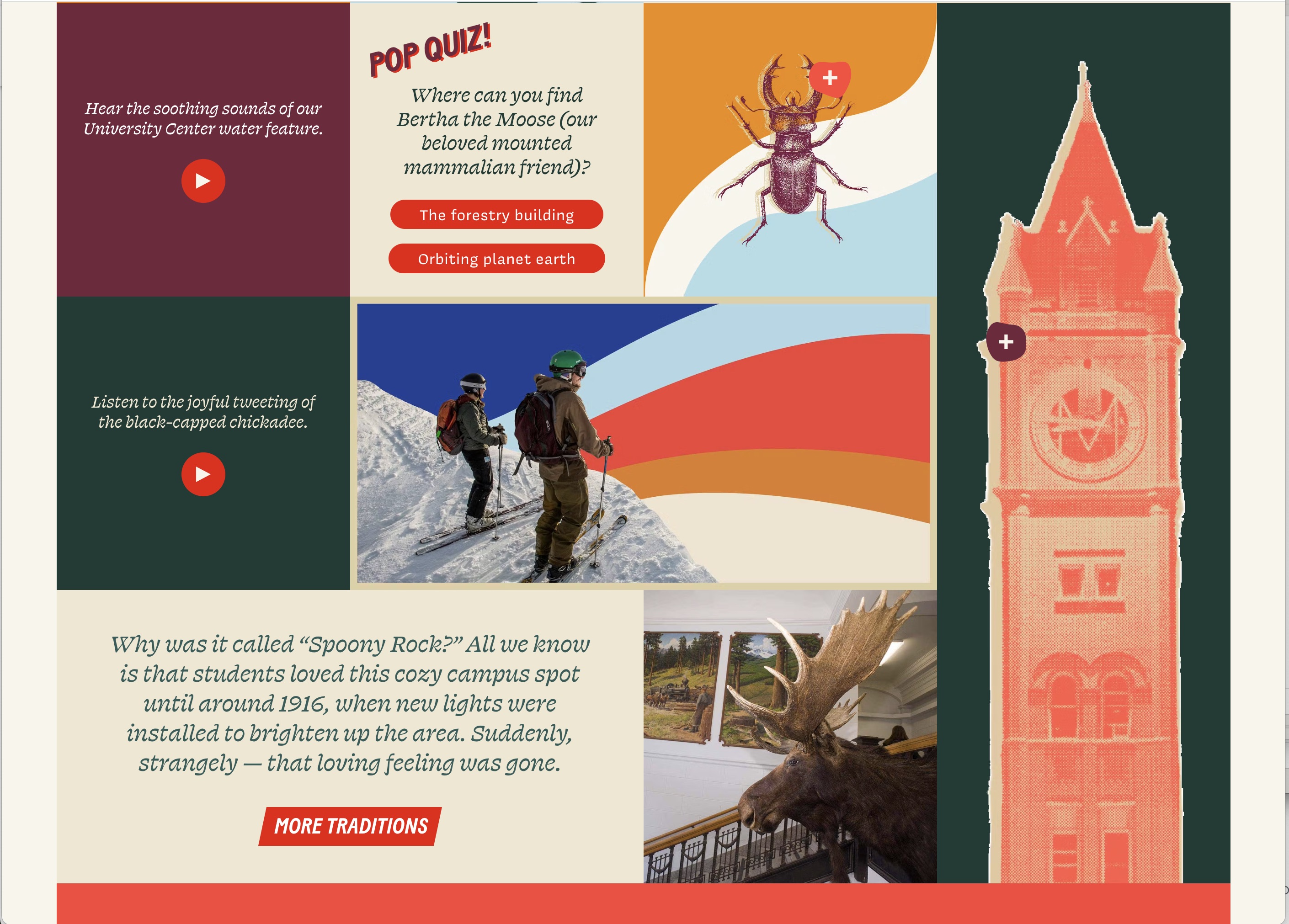
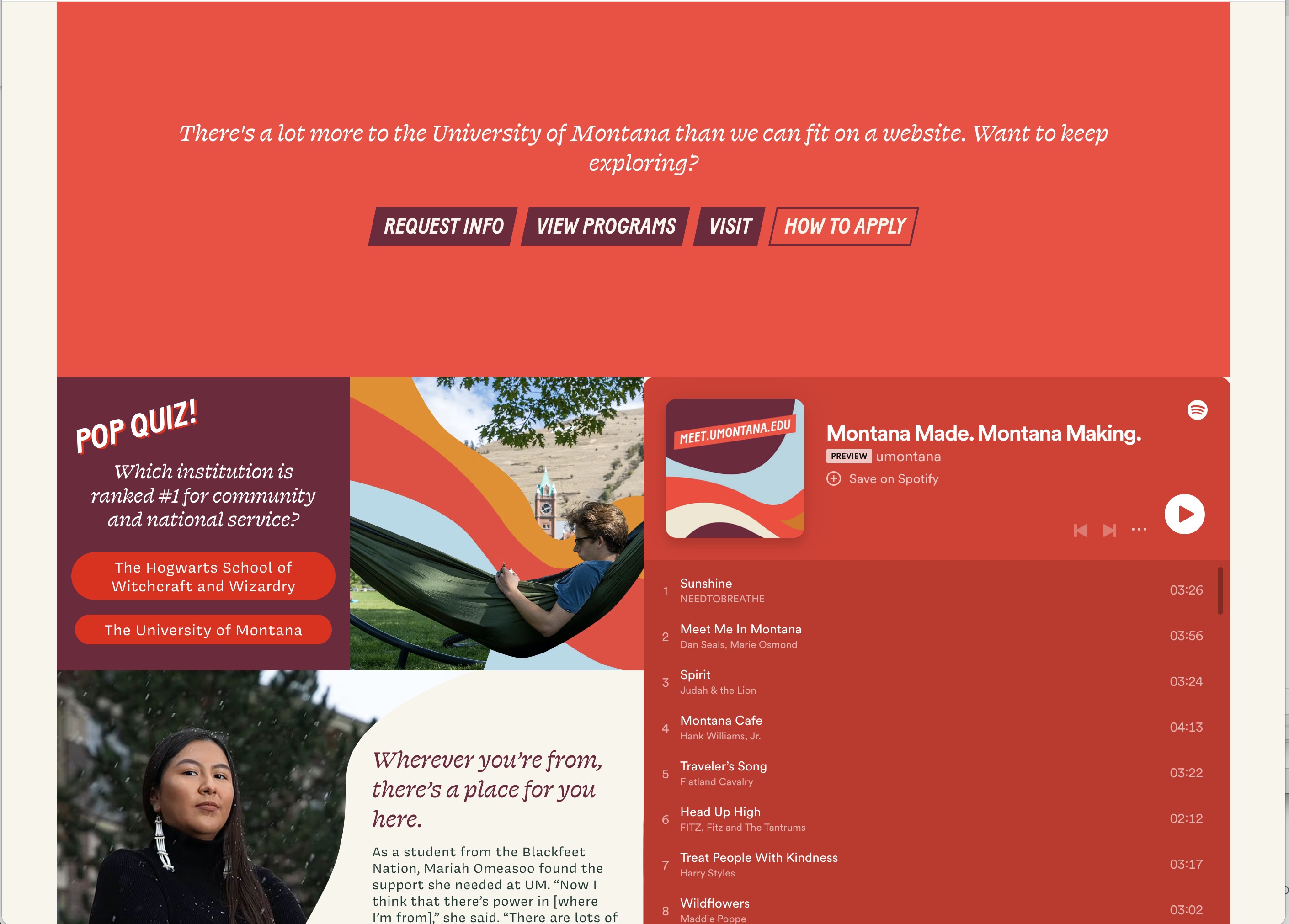
University of Wyoming
Brand experience with informed decision making
What we loved: Use of integrated course catalog and career pathways
The University of Wyoming partnered with the Modern Campus Design Studio to plan and implement a vibrant web design. The site not only highlights the brand colors and brings out the Cowboy experience, but also leverages maps and virtual tours to bring the campus to life
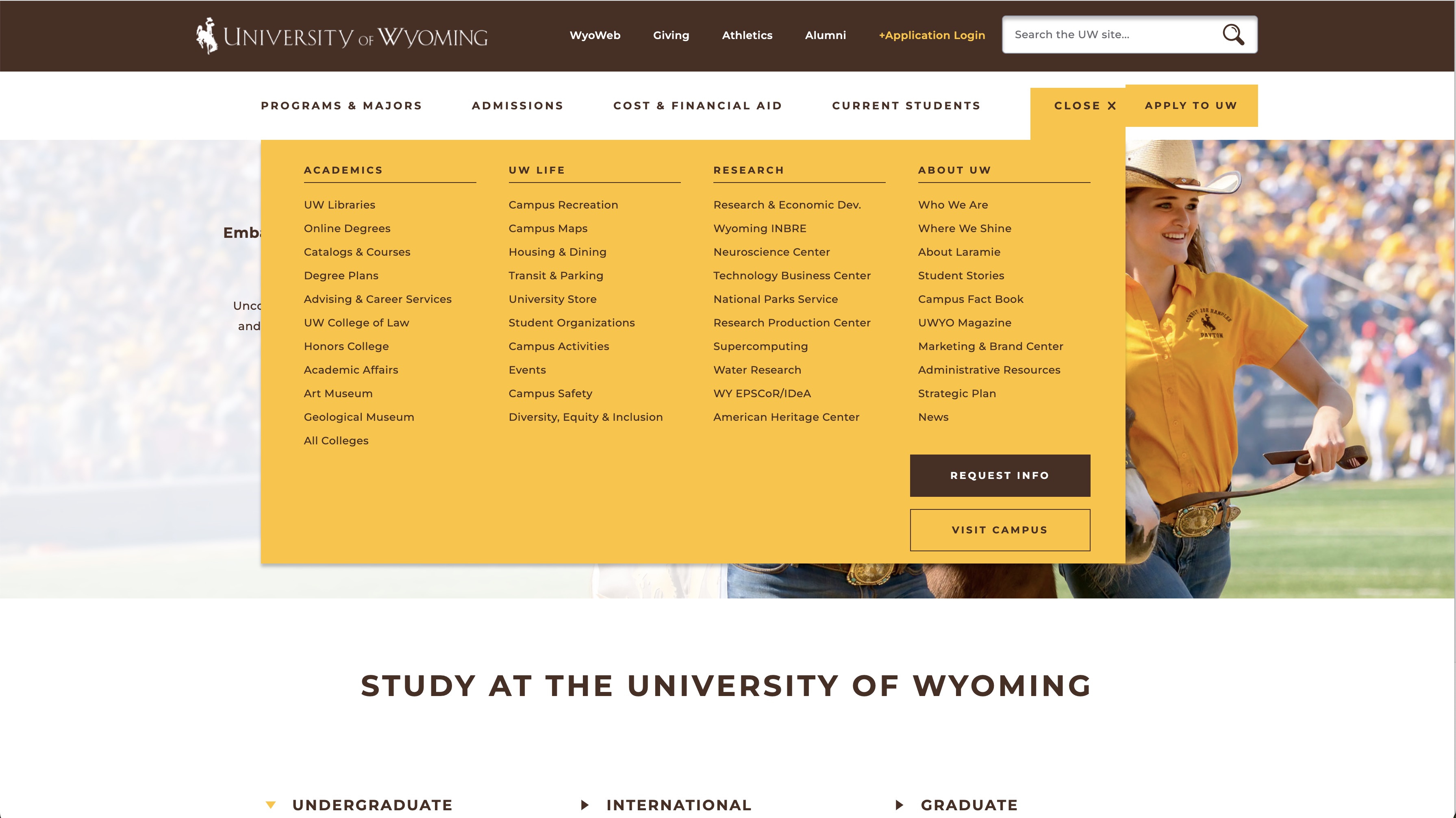
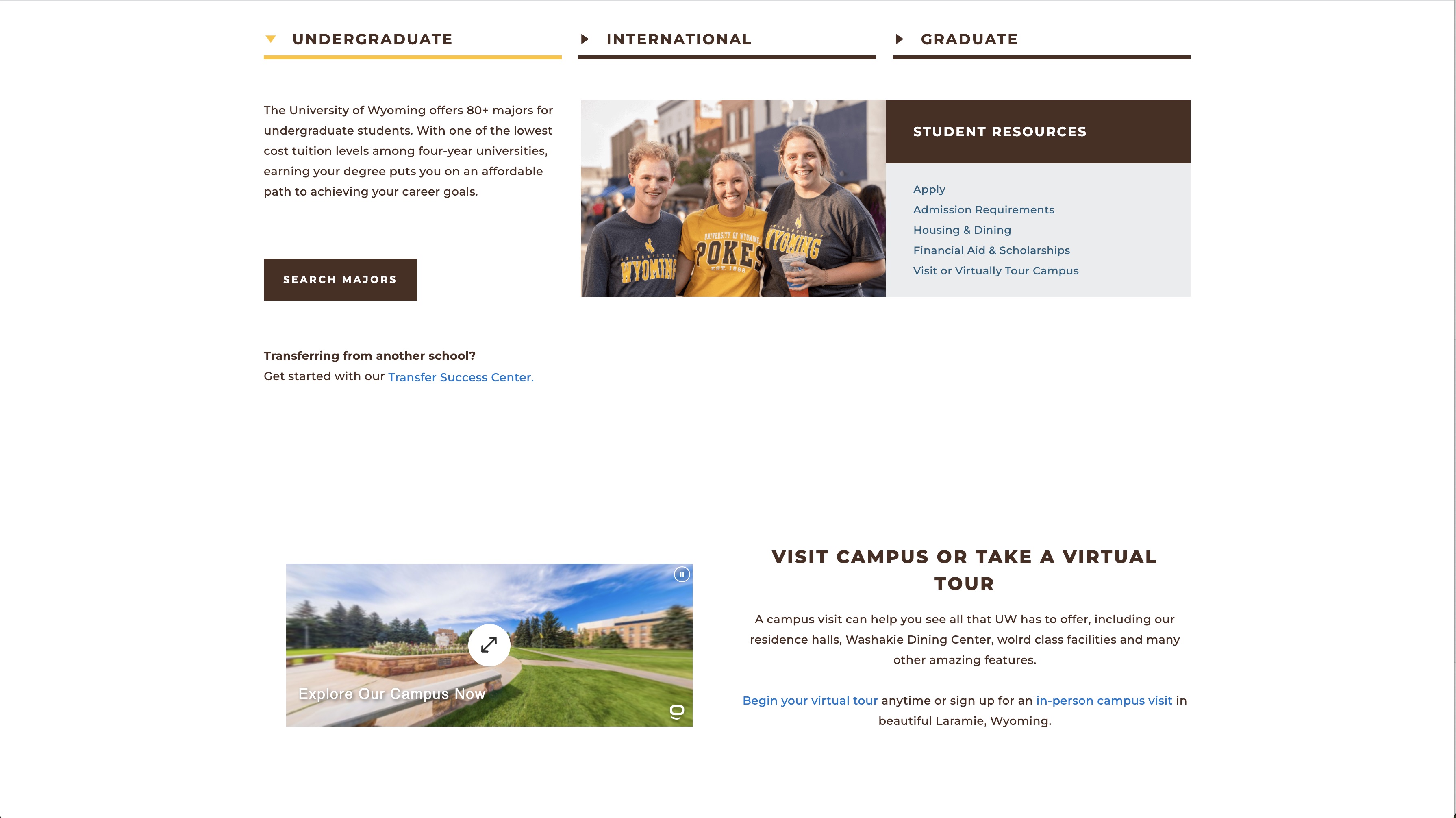
Wyoming also seamlessly integrates its course catalog with the website and provides up-to-date career data on program pages. This helps visitors make informed decisions upon enrolling for a program.
Since Wyoming leverages Modern Campus for its website, web design, course catalog and career pathways, it efficiently provides a seamless, engaging experience across multiple points of student interaction.
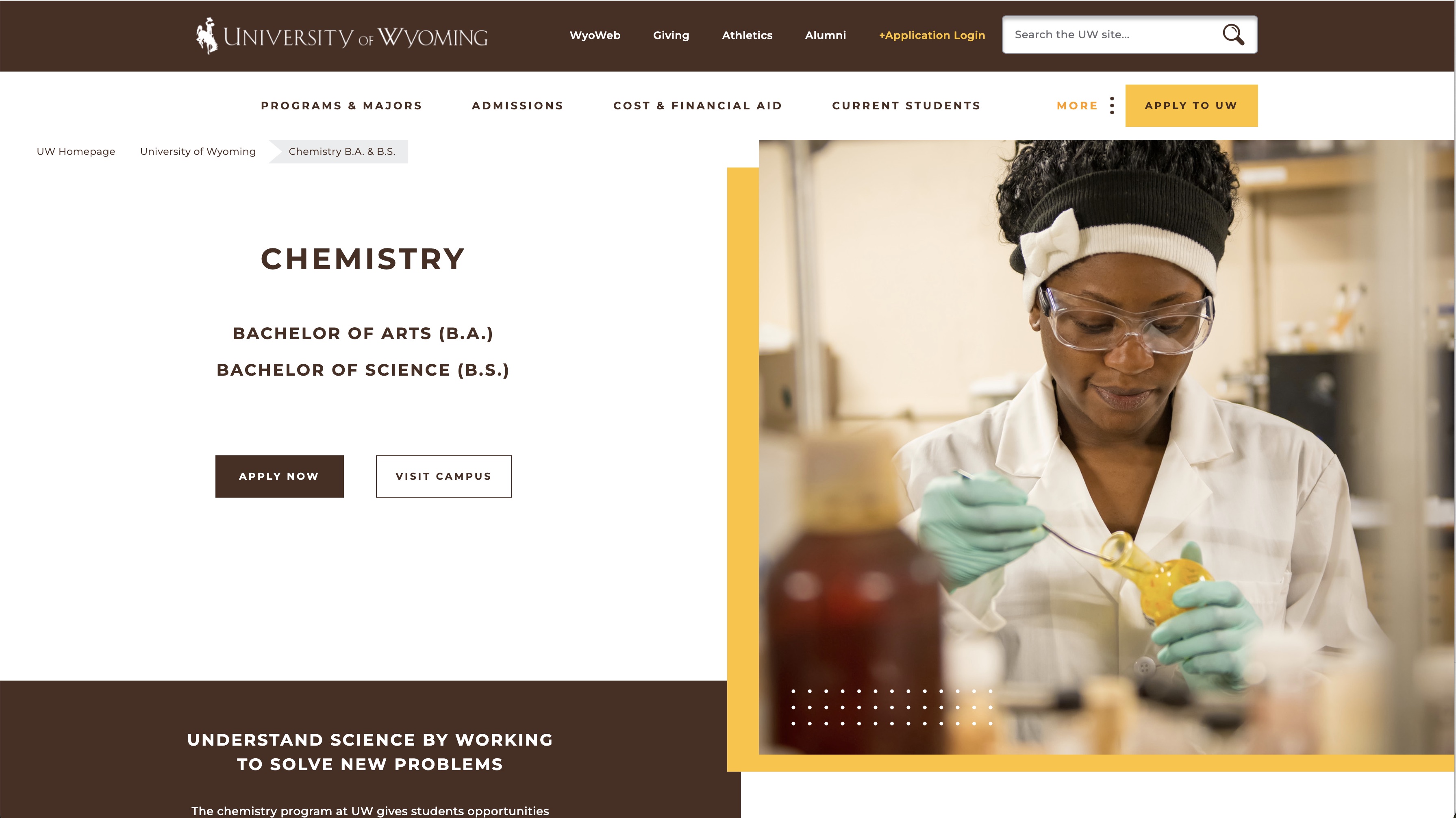
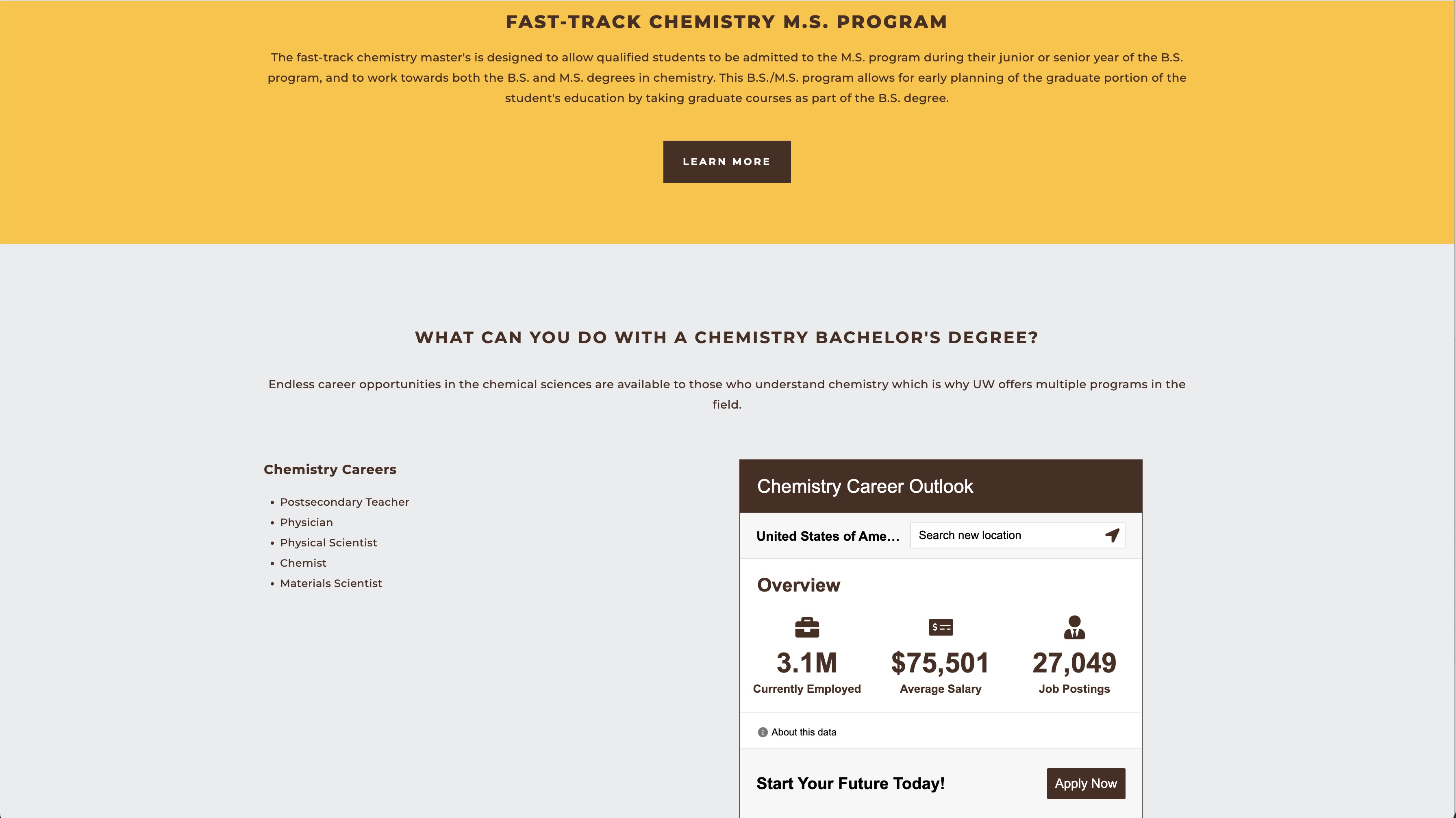
Want to learn how to build a stellar higher ed website?
Designing, building and maintaining university and college websites is challenging. Audiences range from prospective and current students to faculty, researchers, students' families, alumni, funders and policymakers. Moreover, the numerous departments and administrative units within each institution have their own objectives and priorities.
Download our quick guide, Anatomy of a Purpose-Built College Website, to learn how to design and build a higher ed website that meets your prospective students’ expectations.
Anatomy of a Purpose-Built College Website
Your Quick Guide to Designing Your Website to Meet Students' Expectations
Last updated: November 16, 2023




